
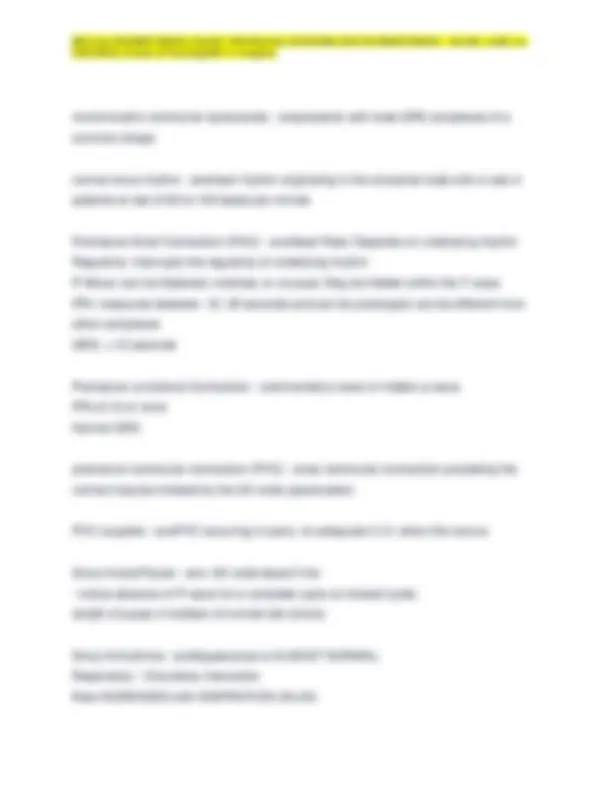

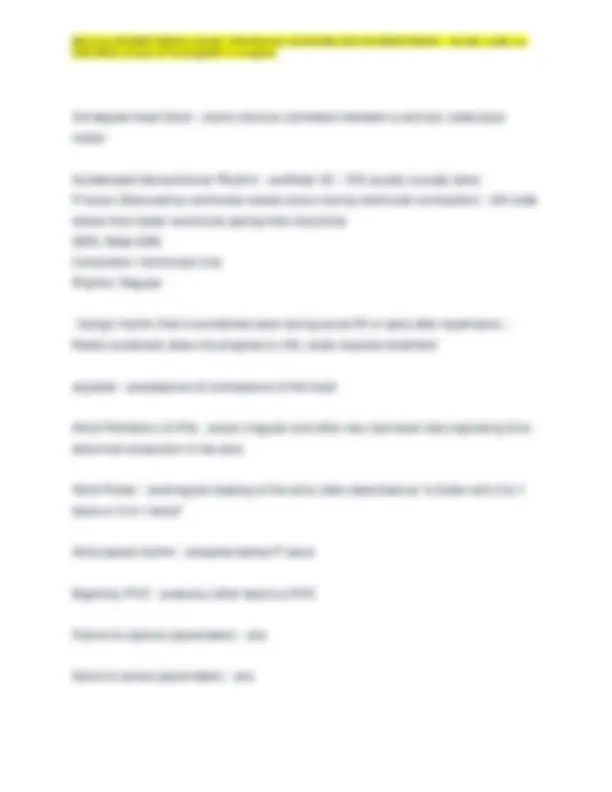
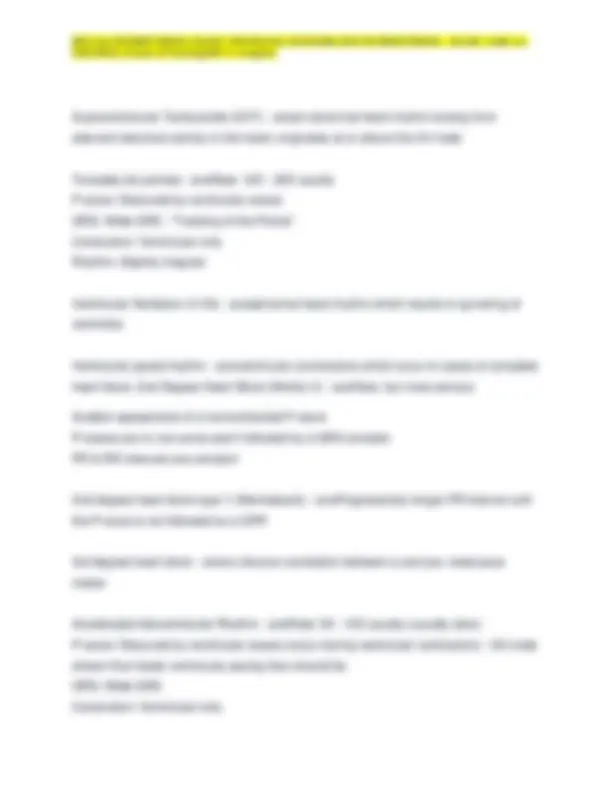
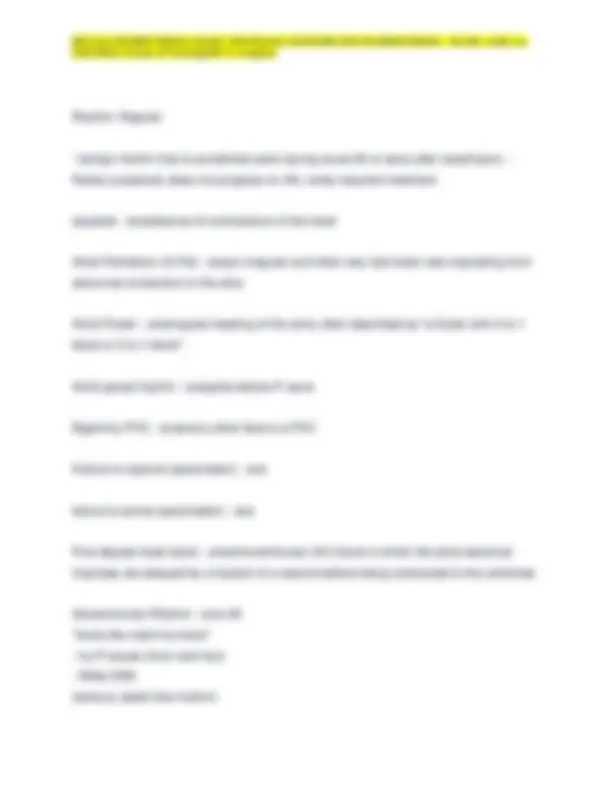
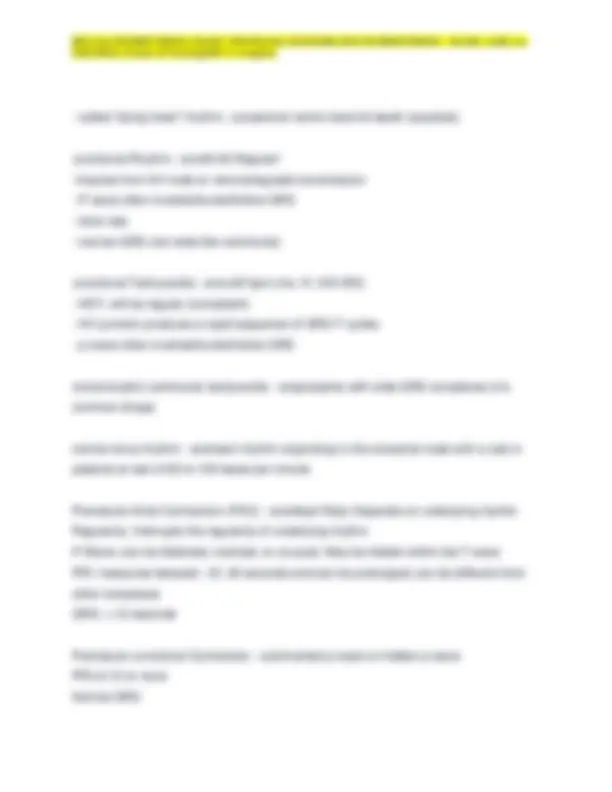
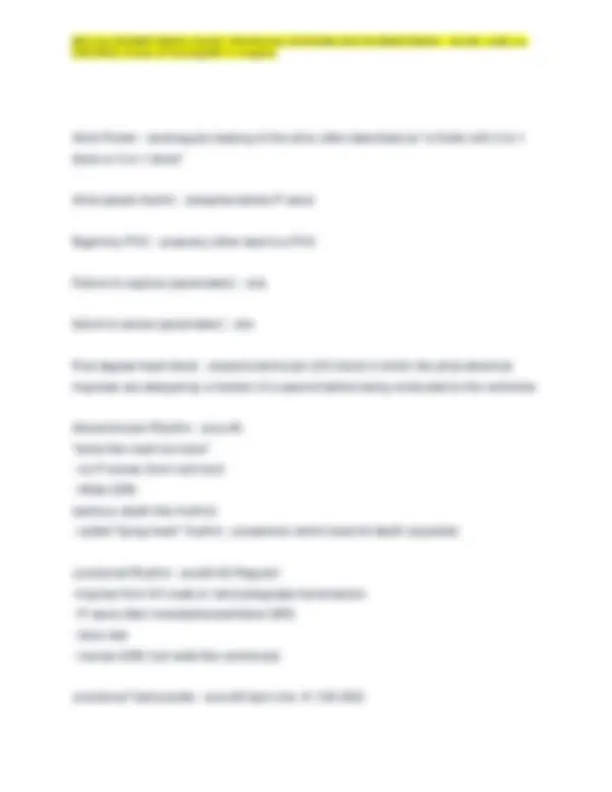
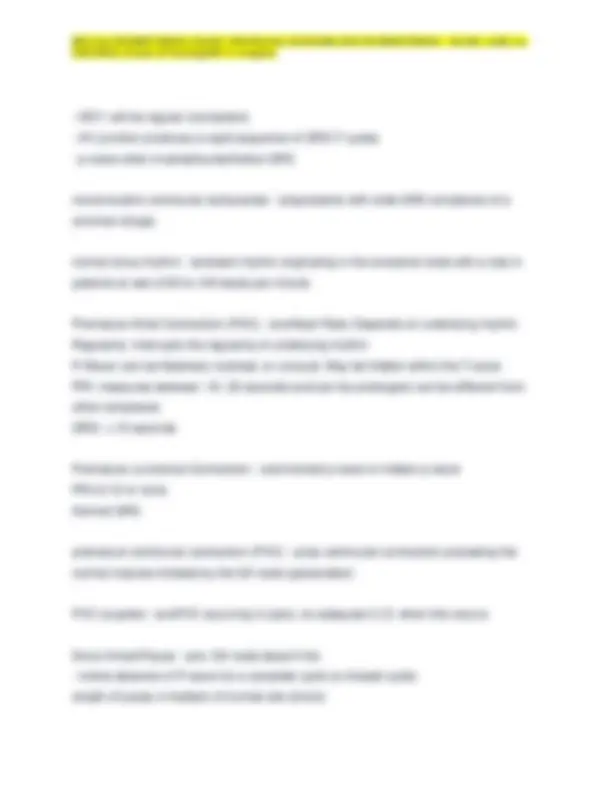
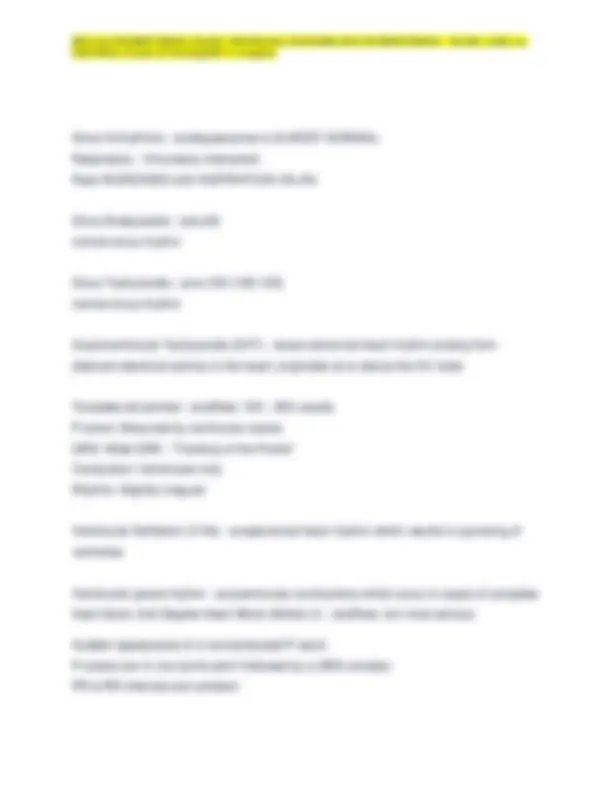
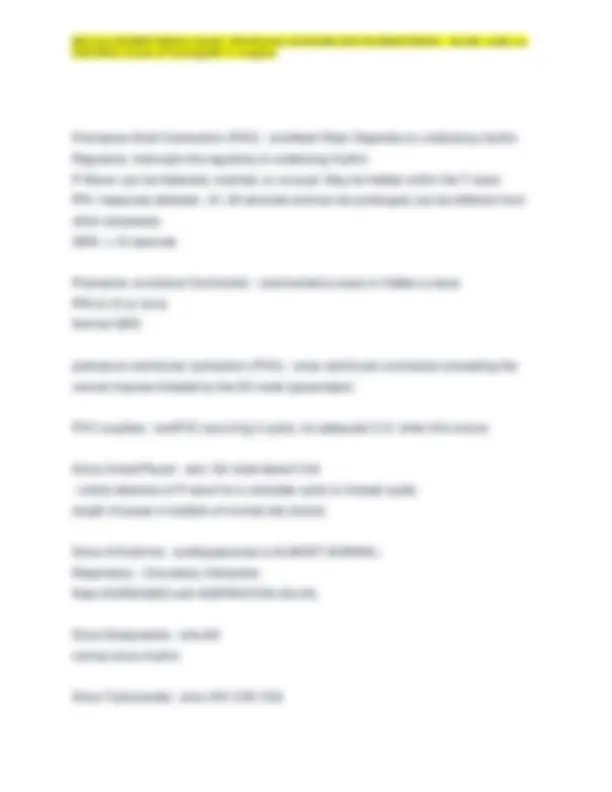
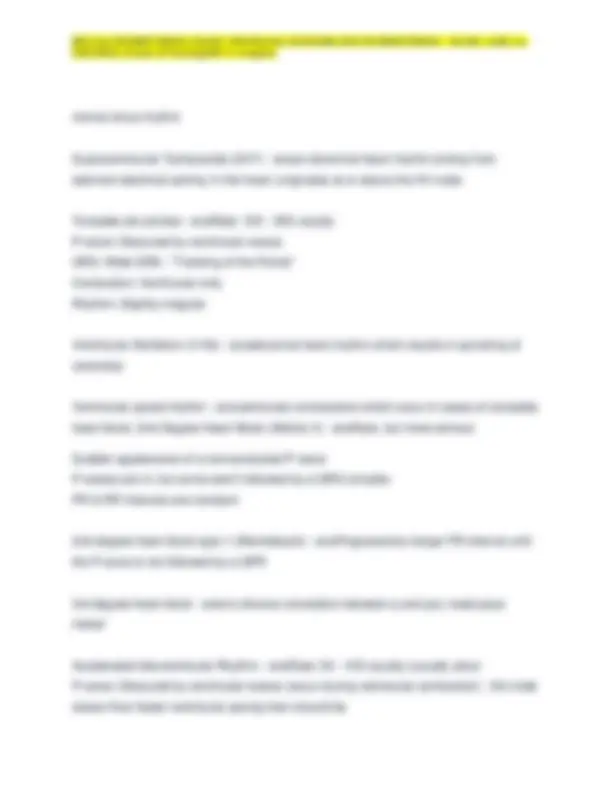
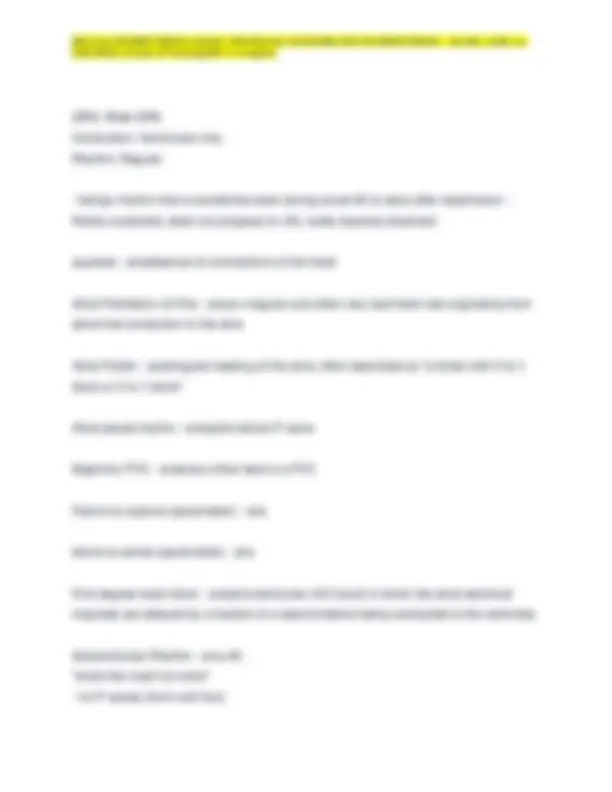
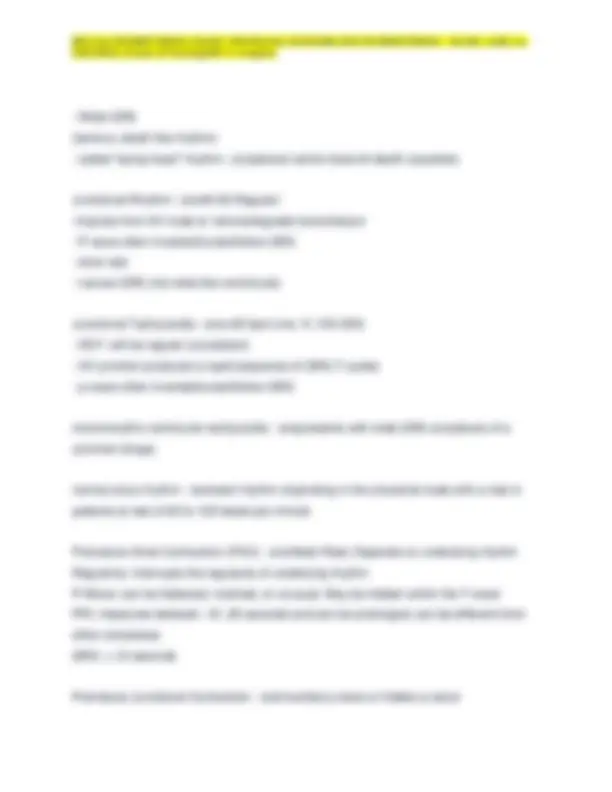
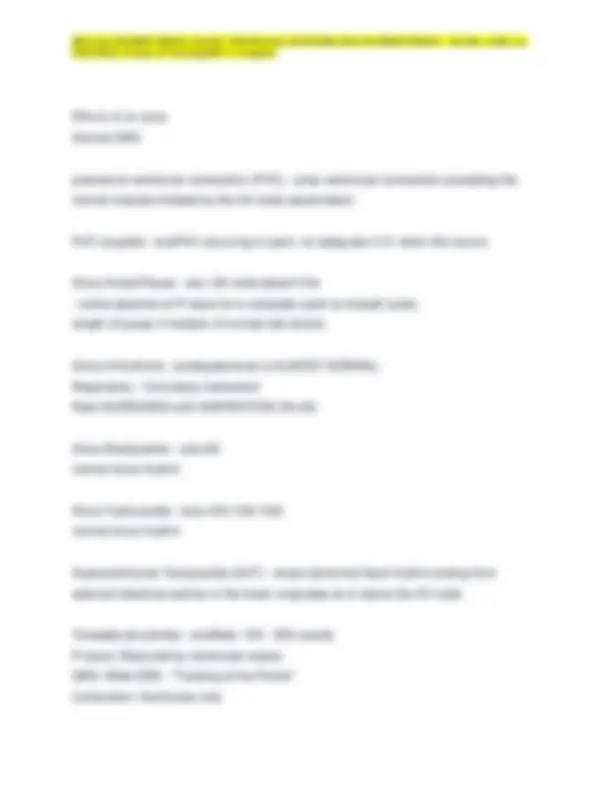
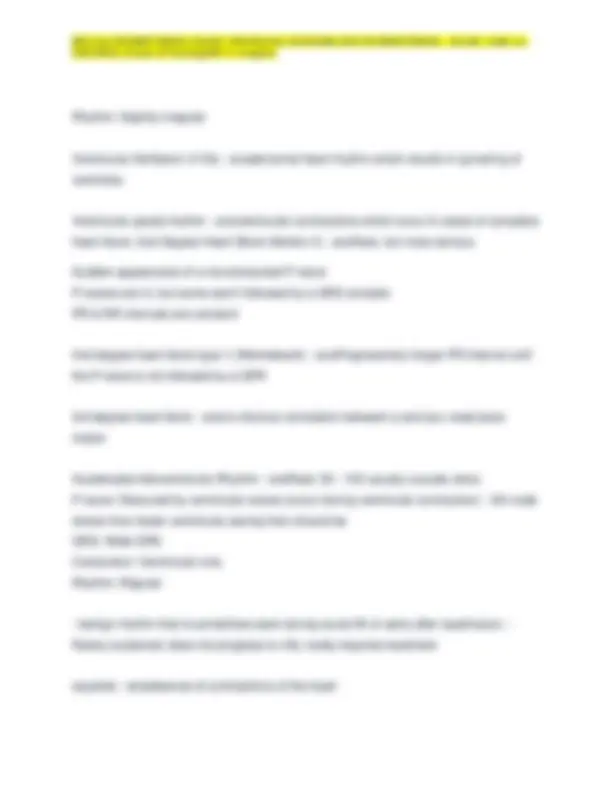
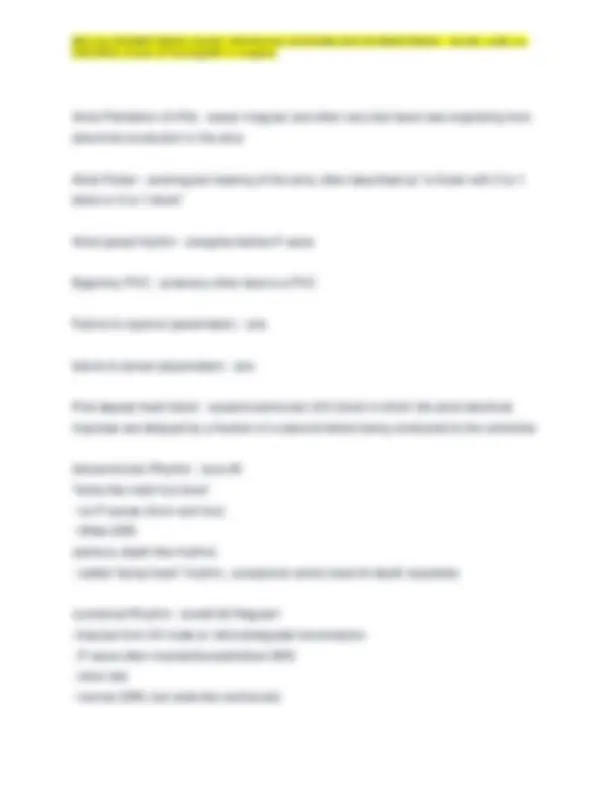
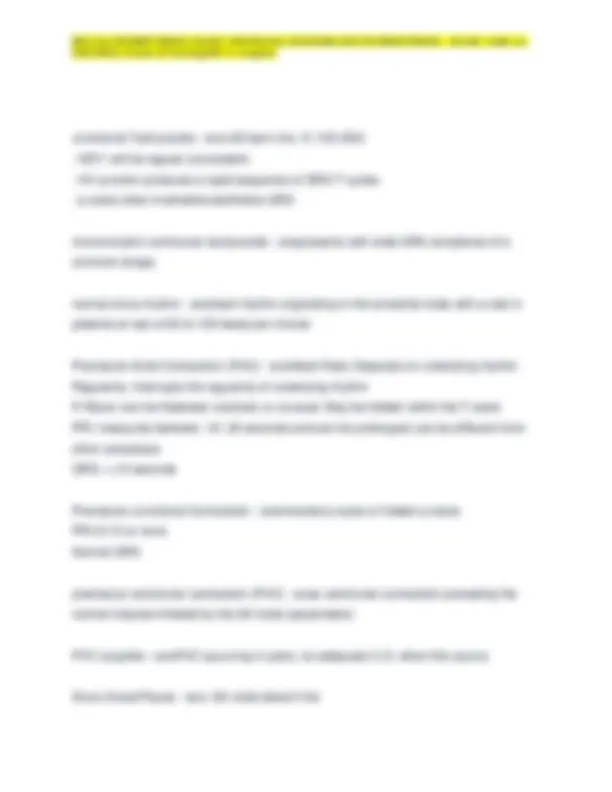
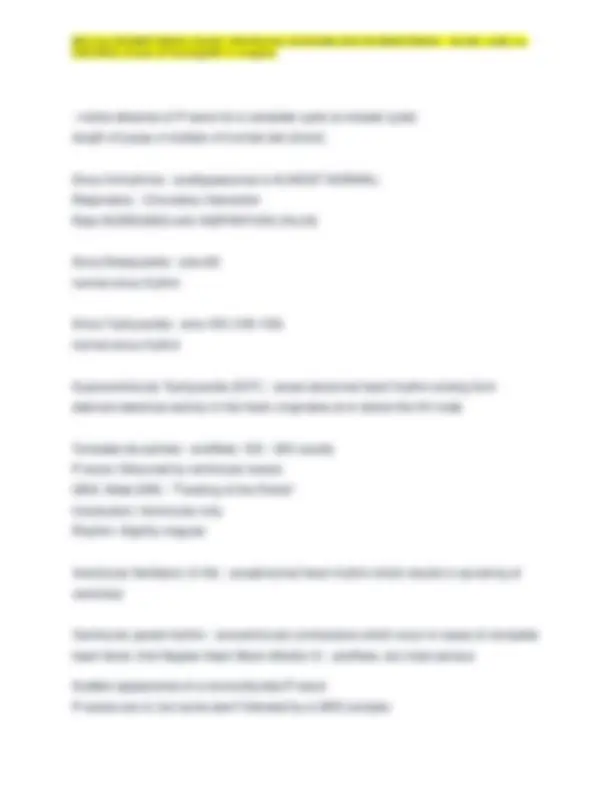
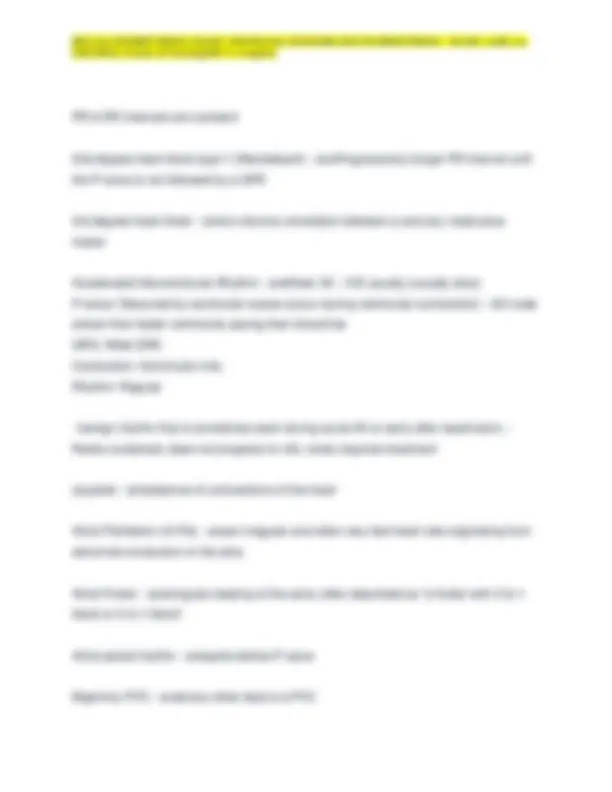
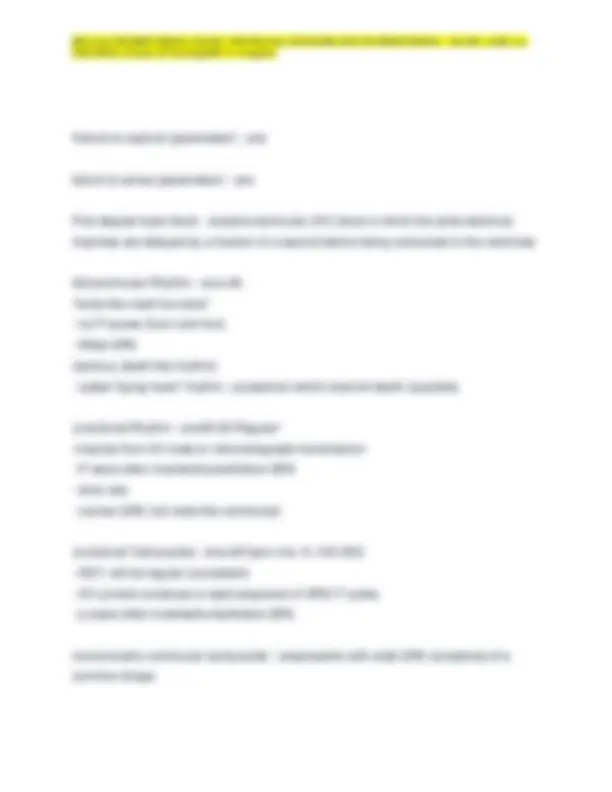
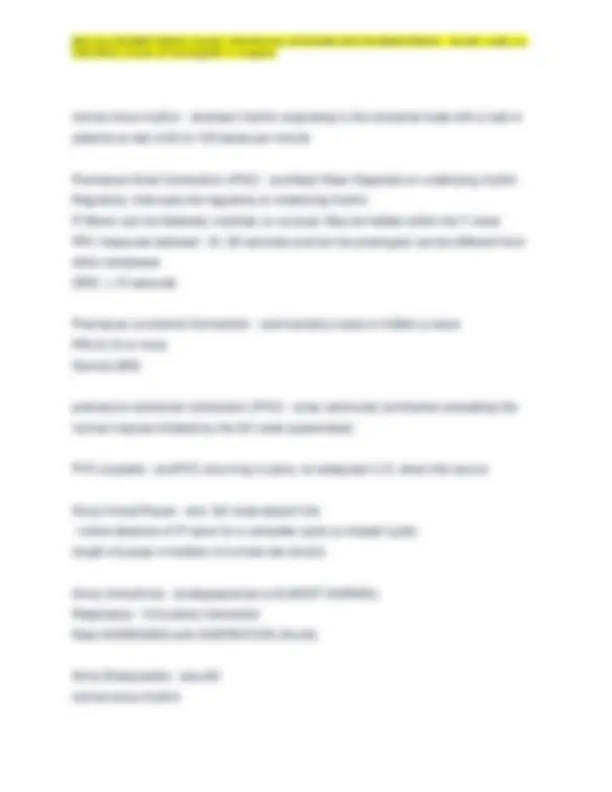
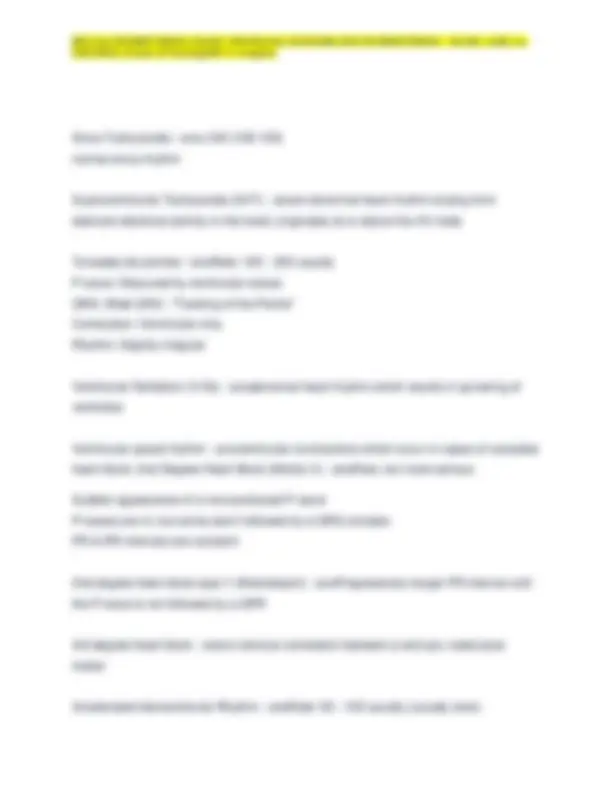
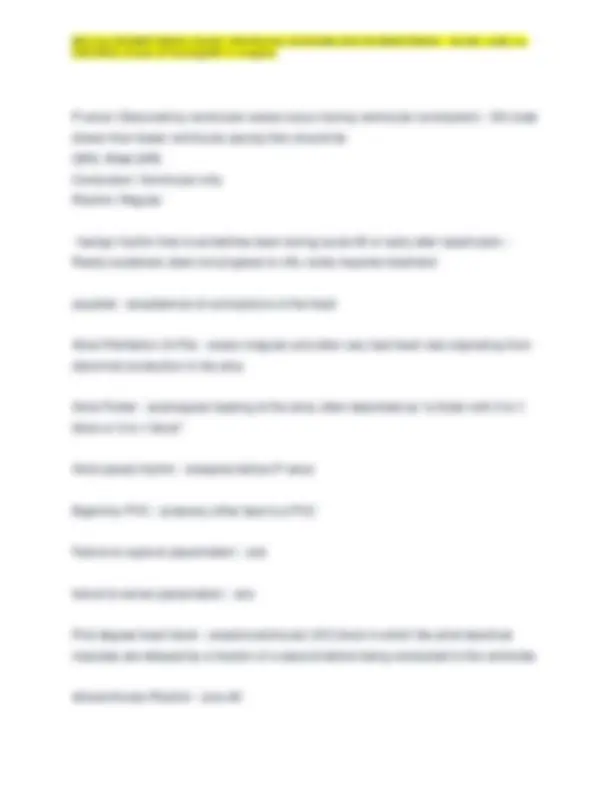
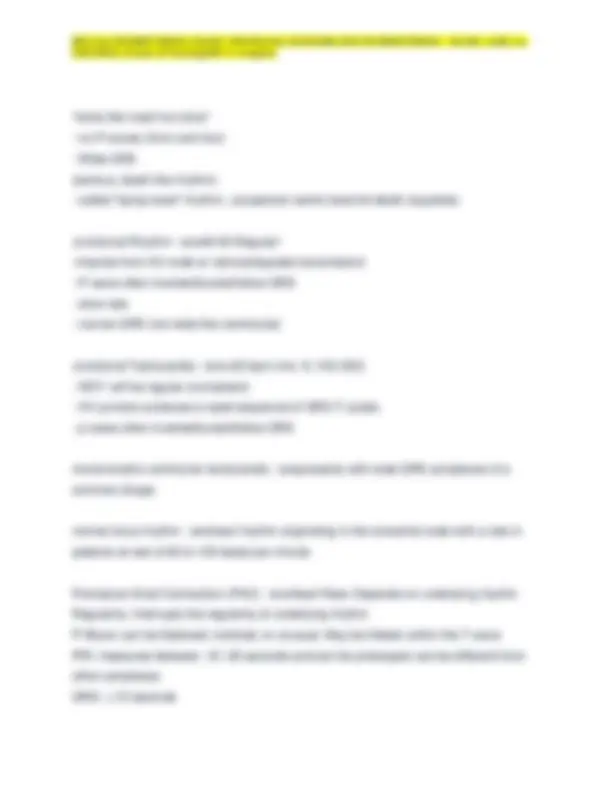
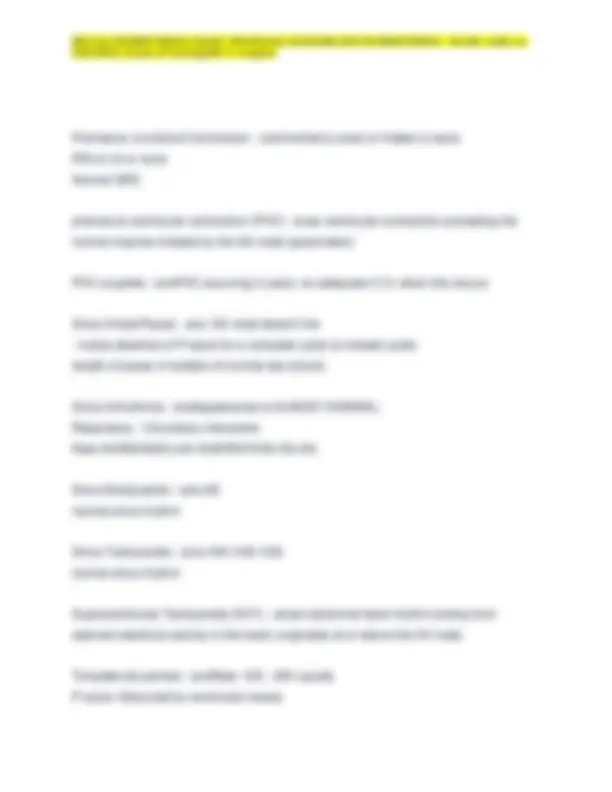
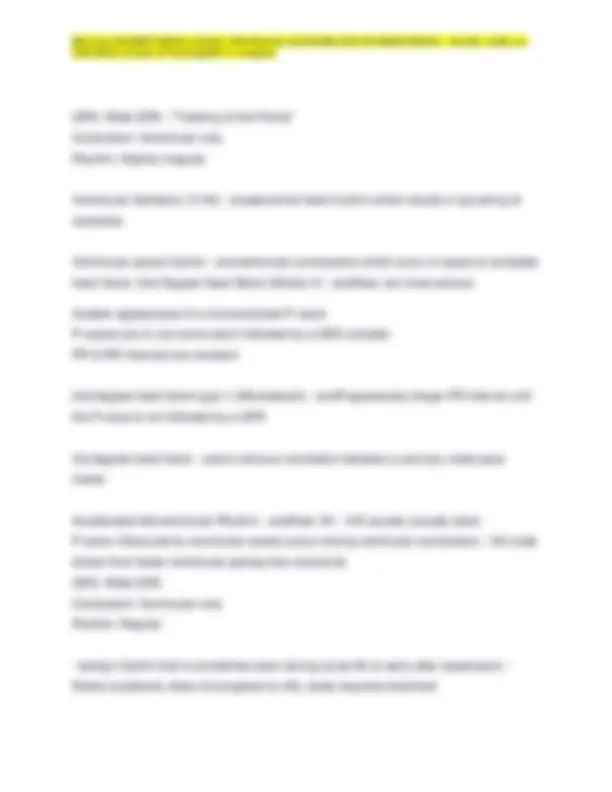
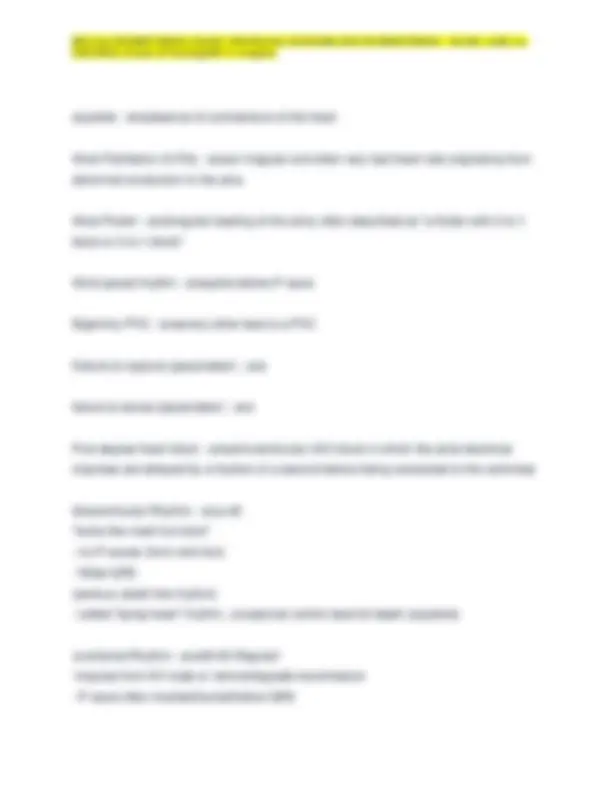

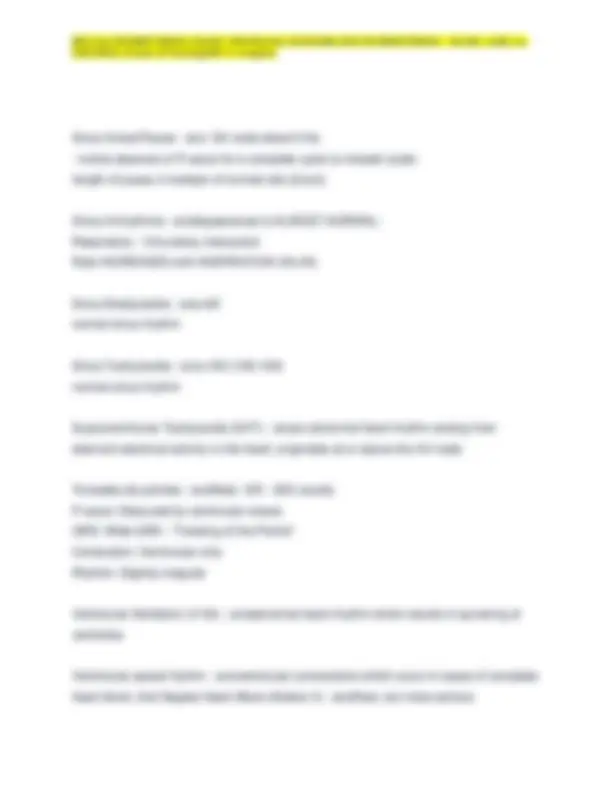
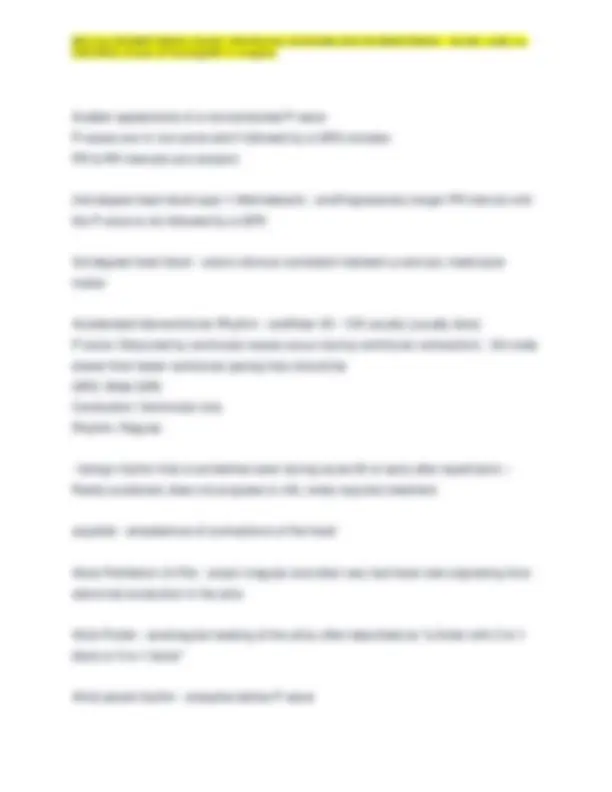
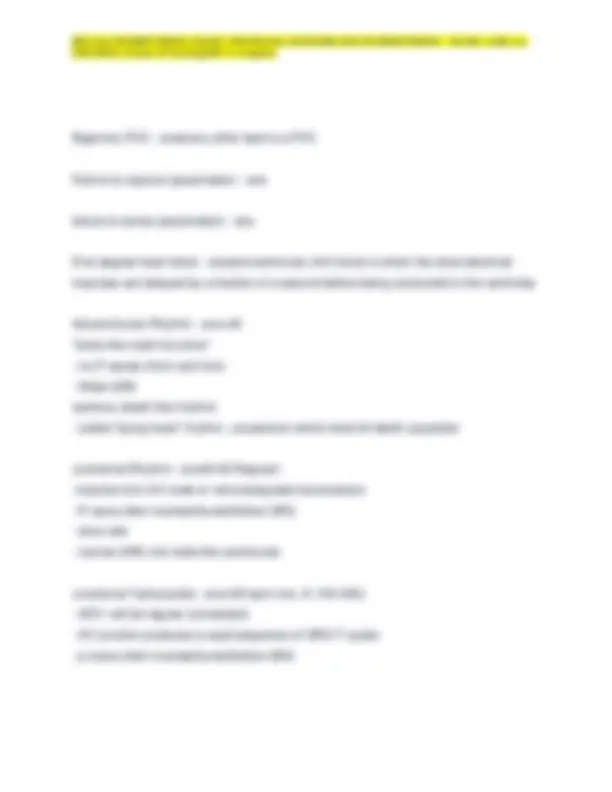
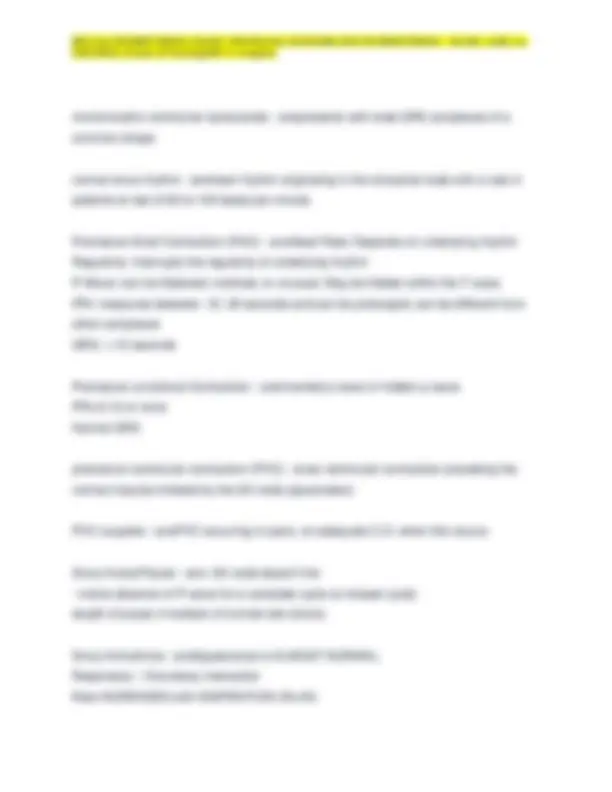
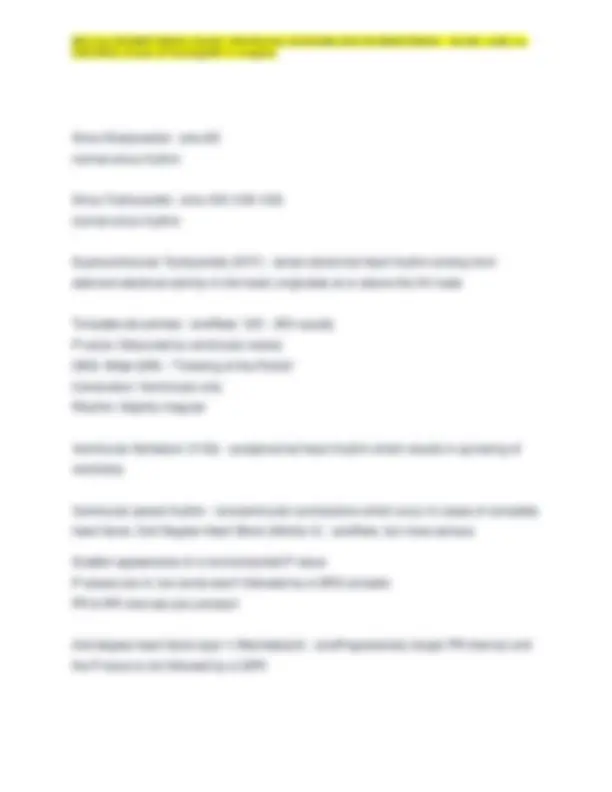

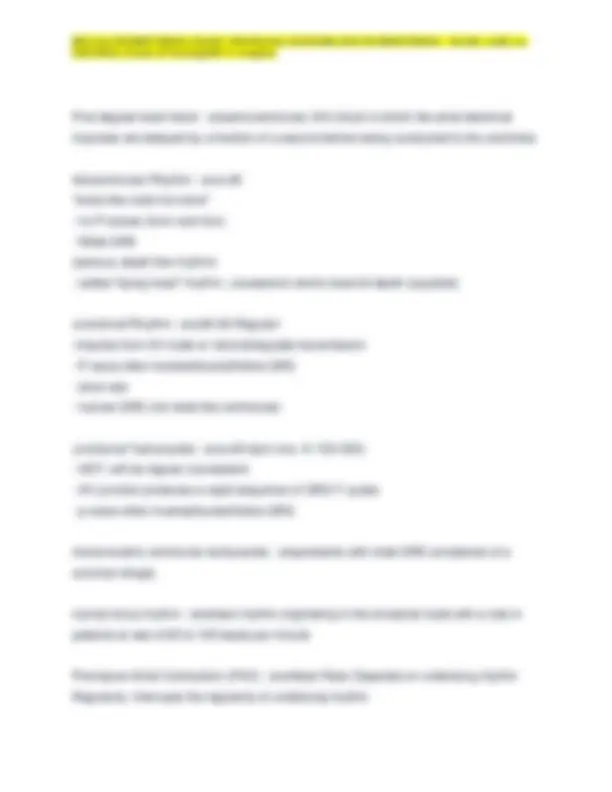
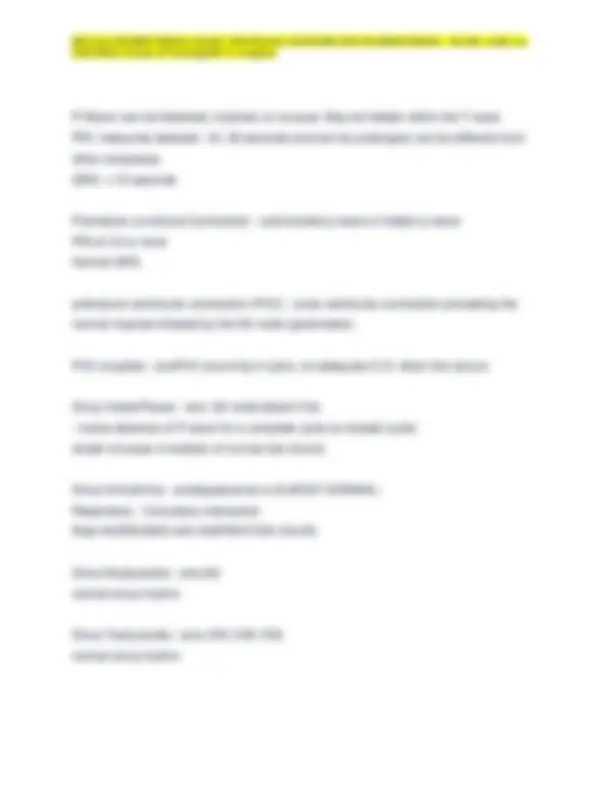
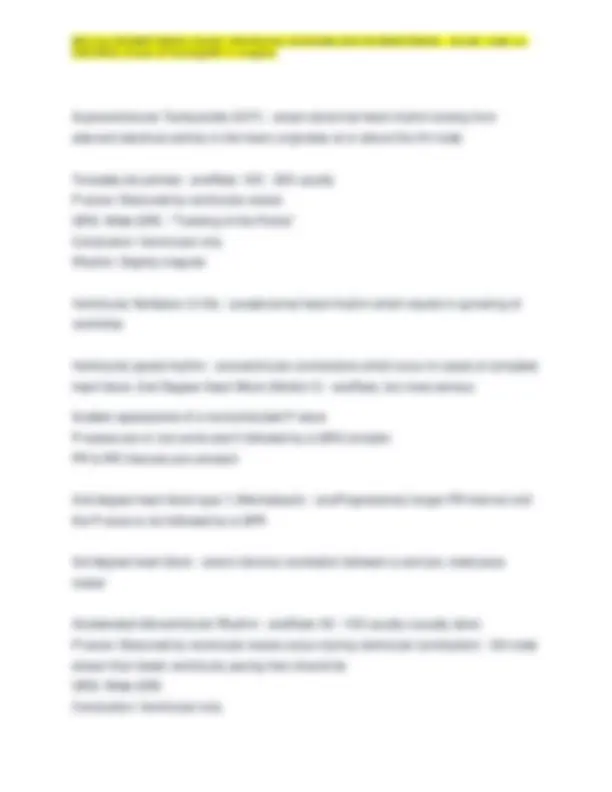
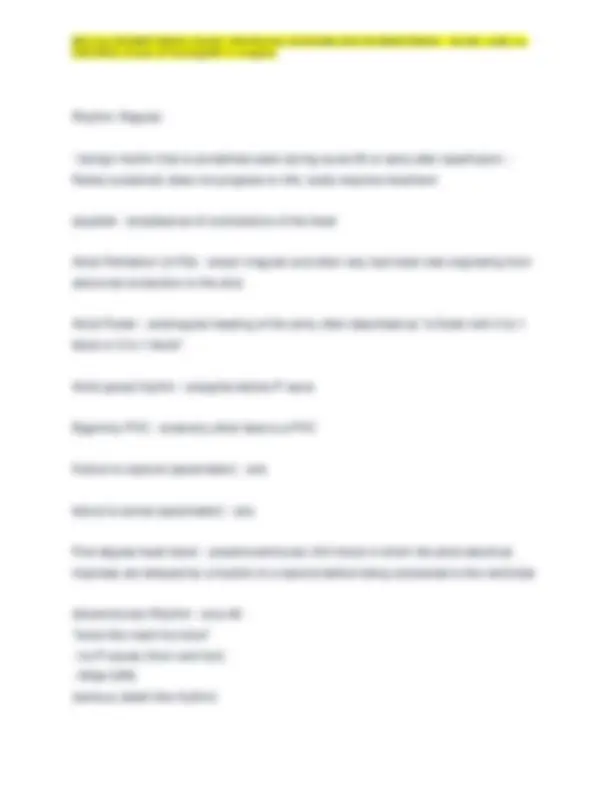
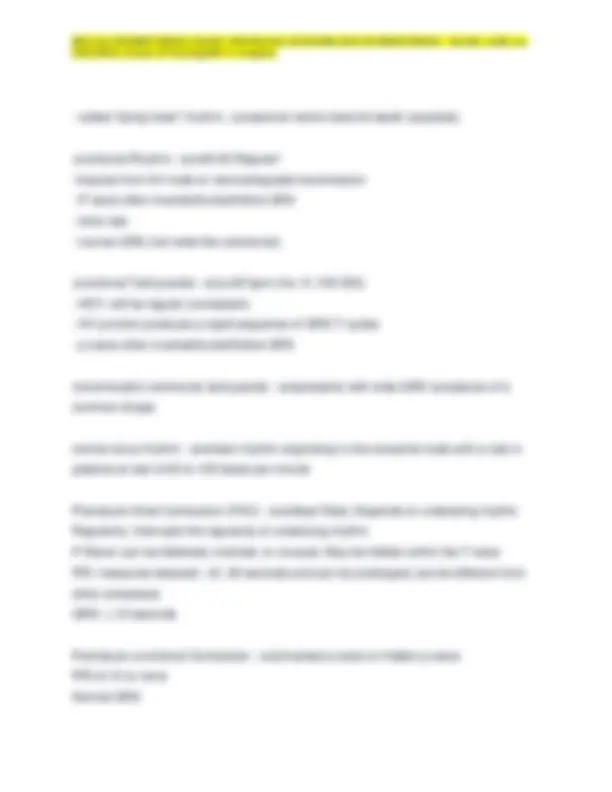
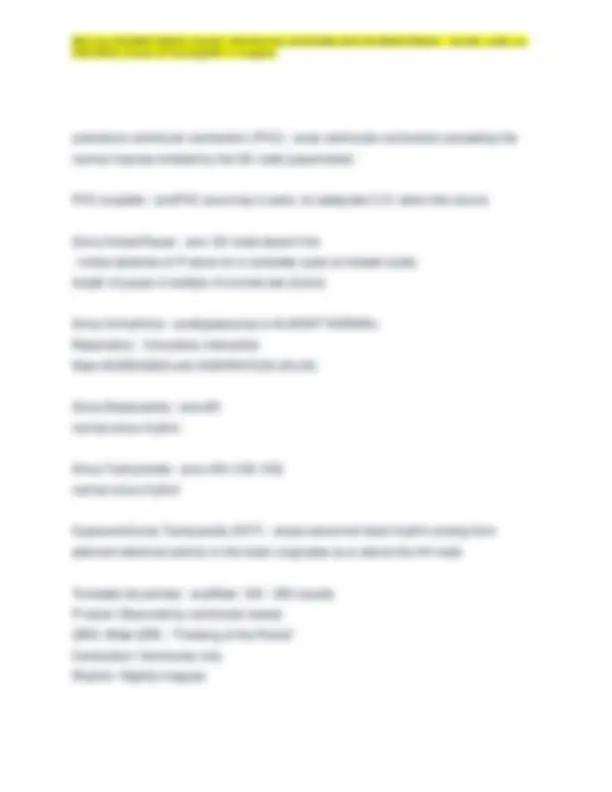
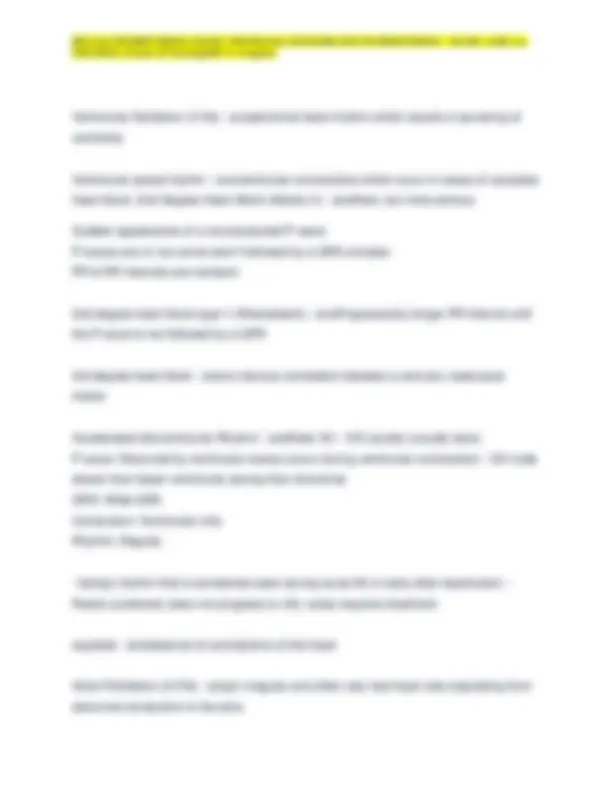
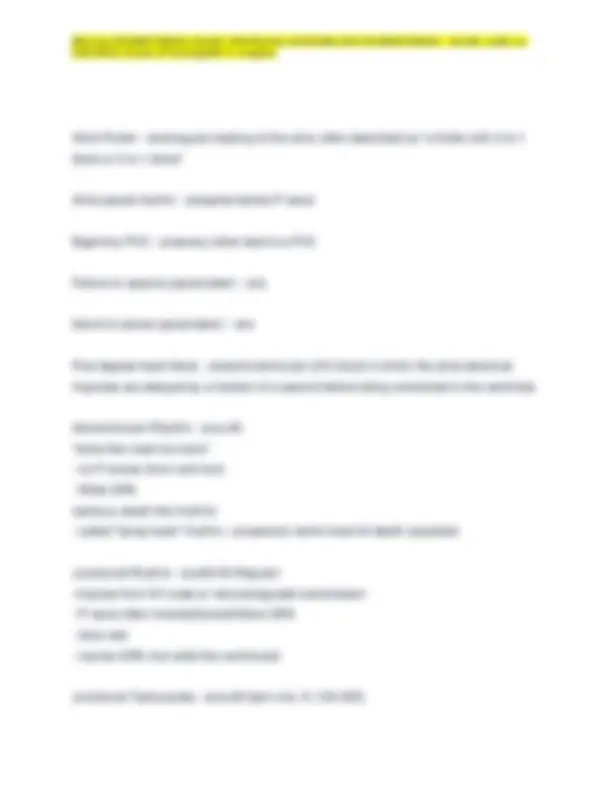
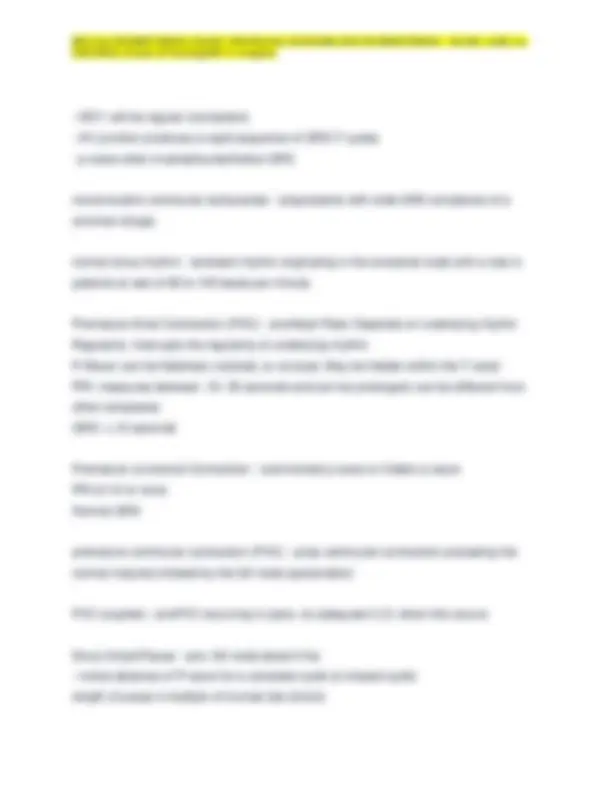
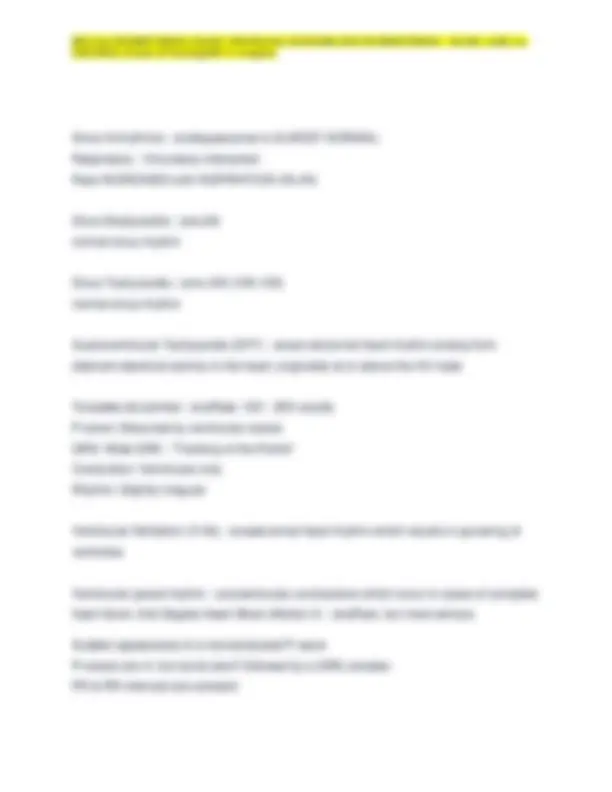
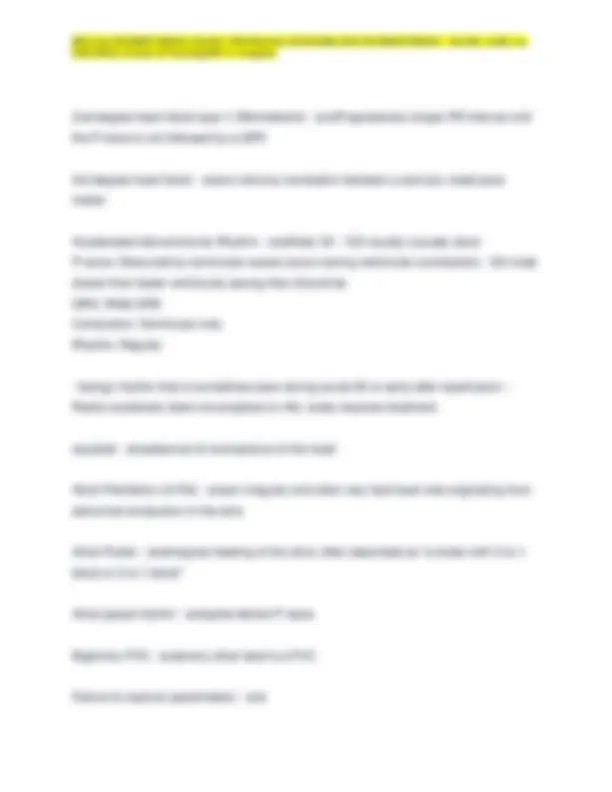
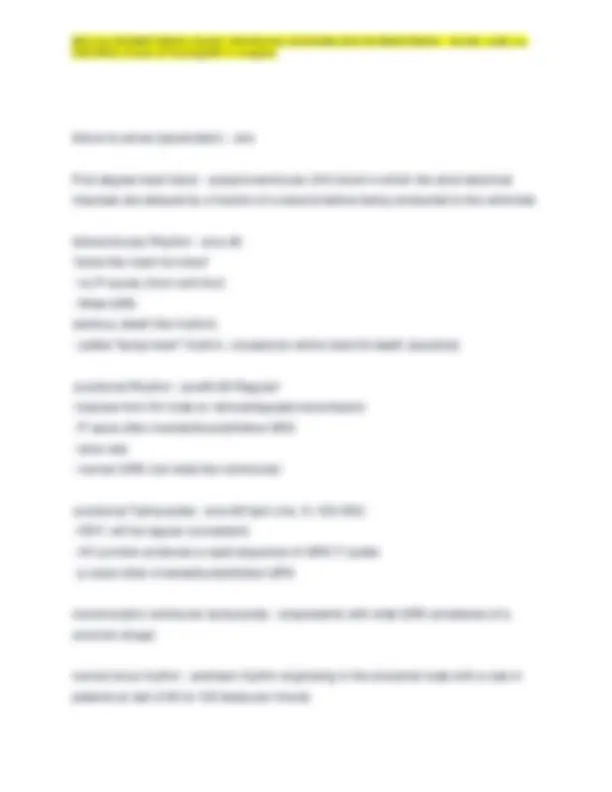
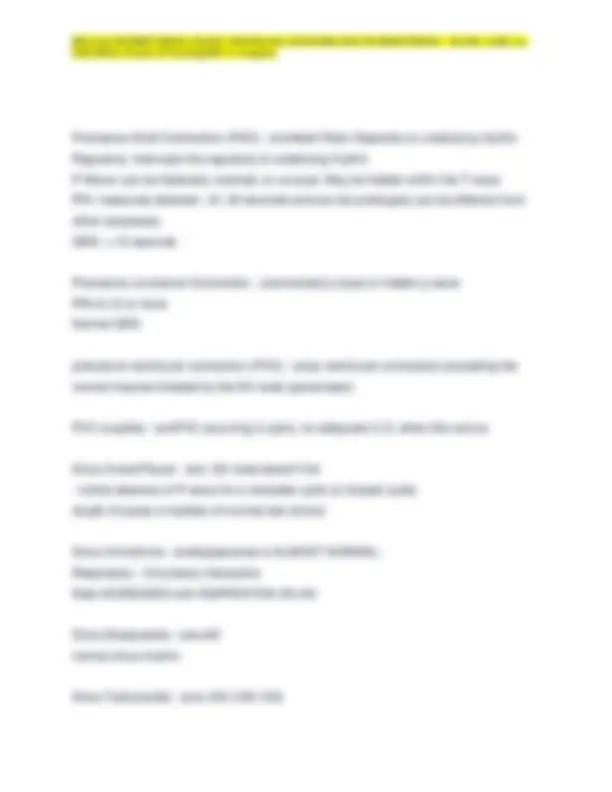
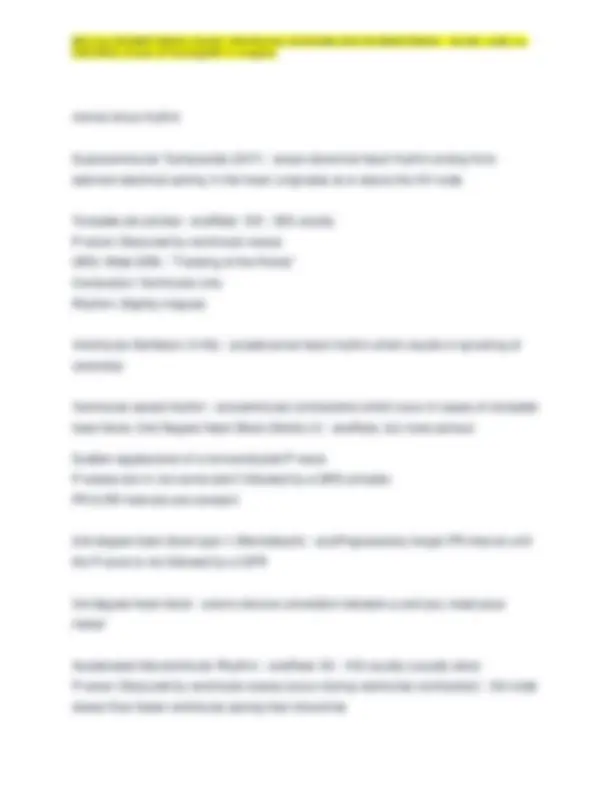
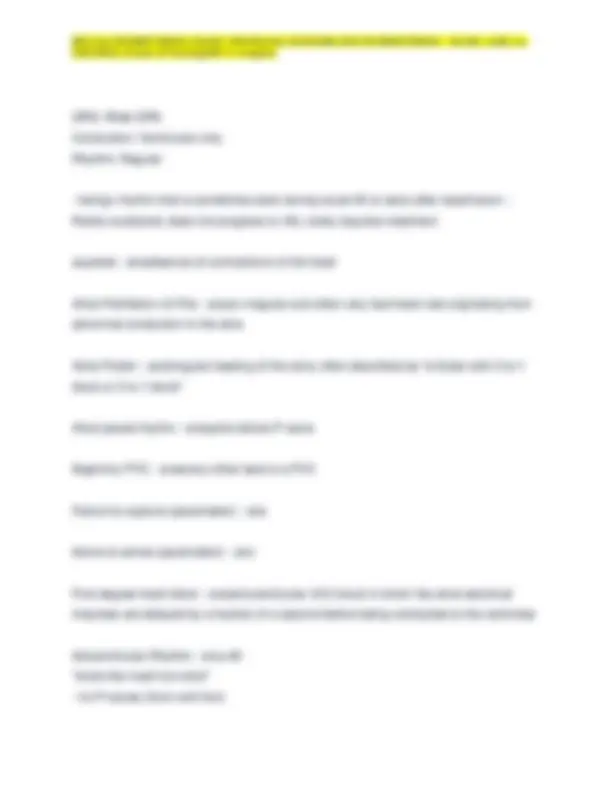
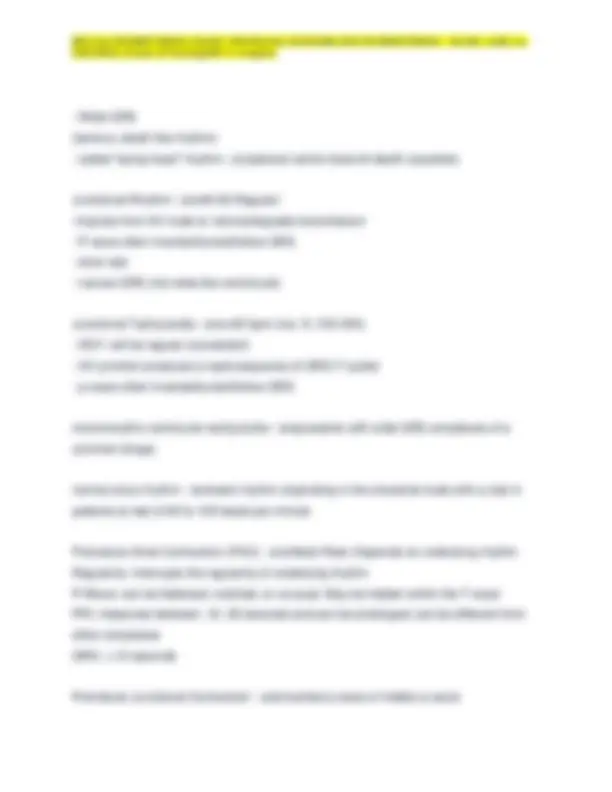
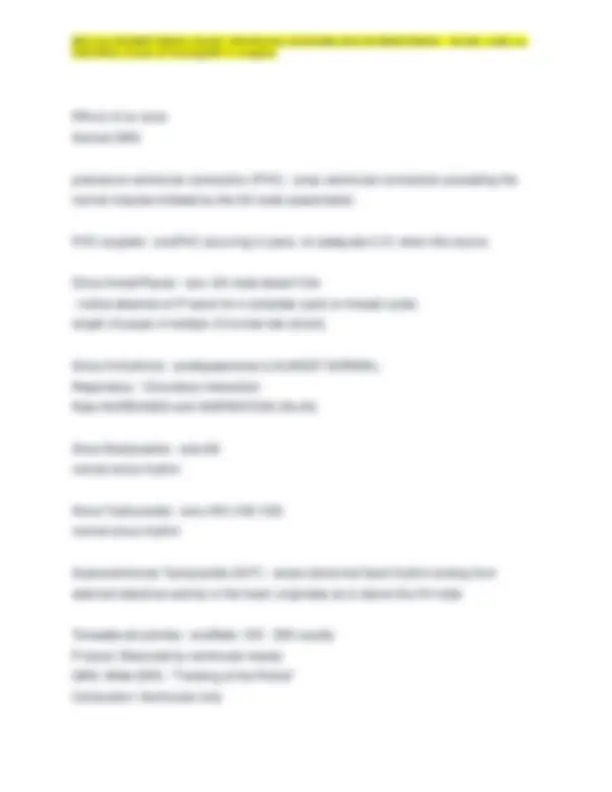
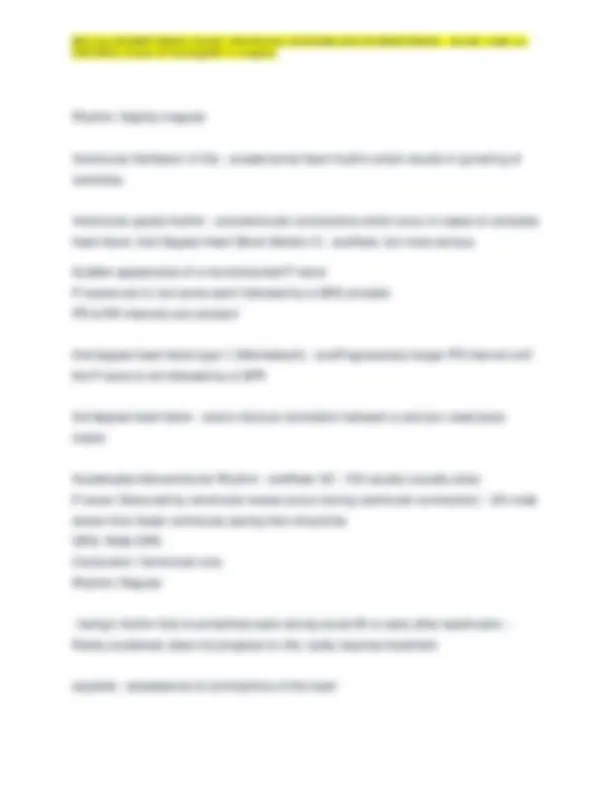
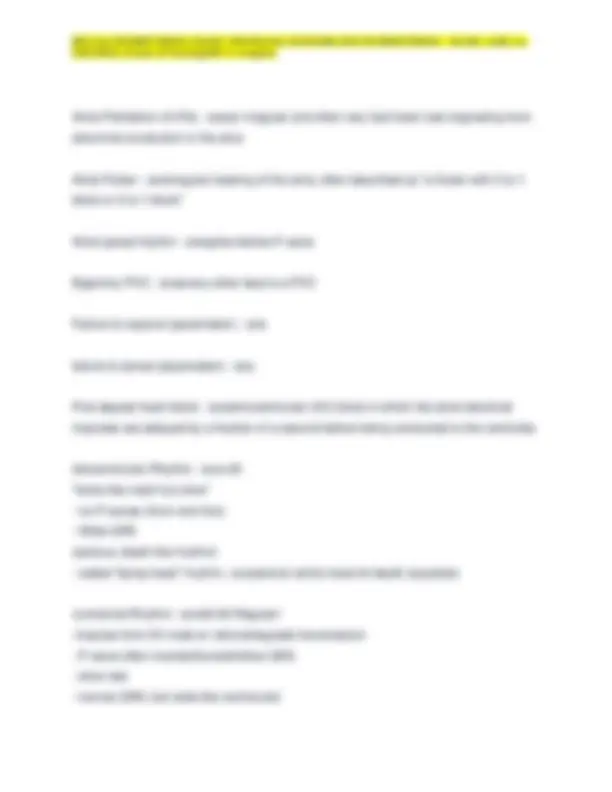
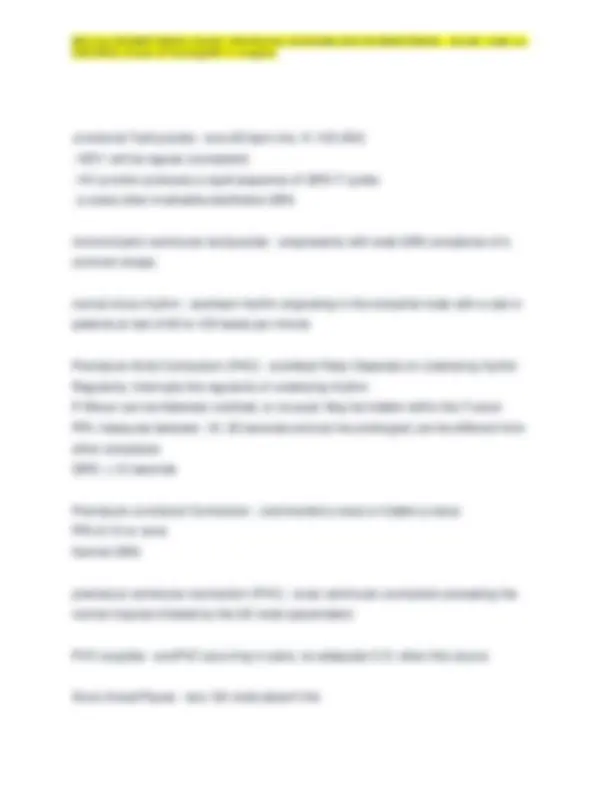
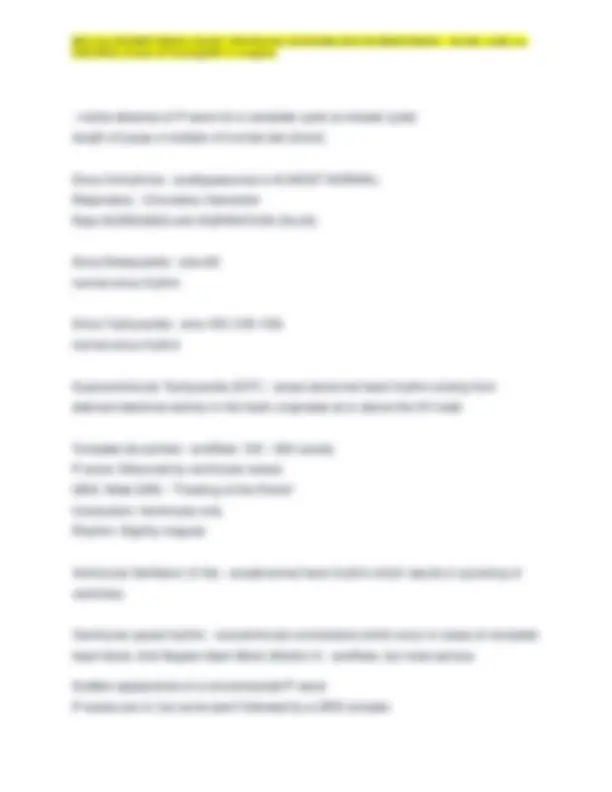
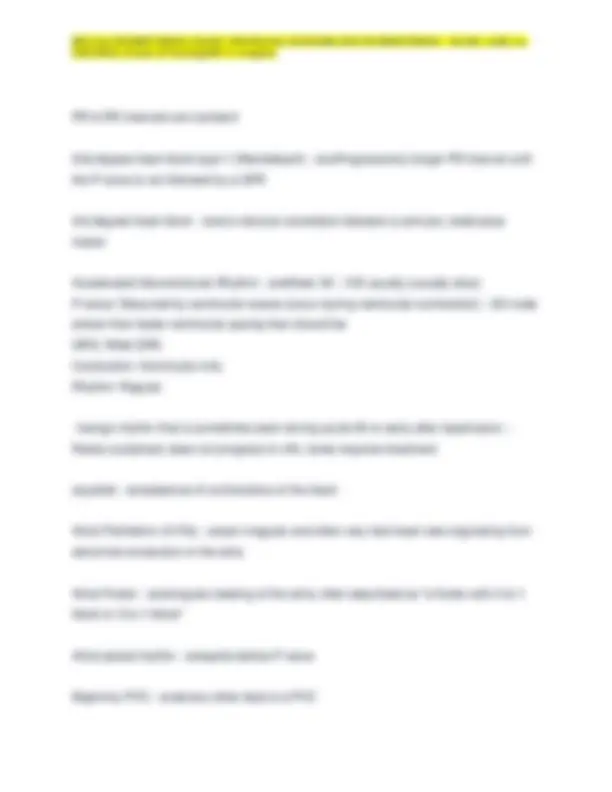
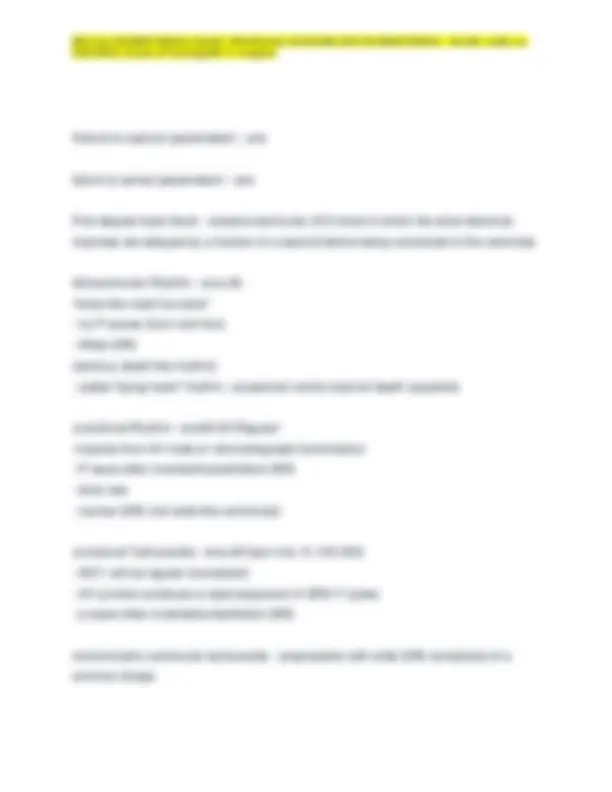
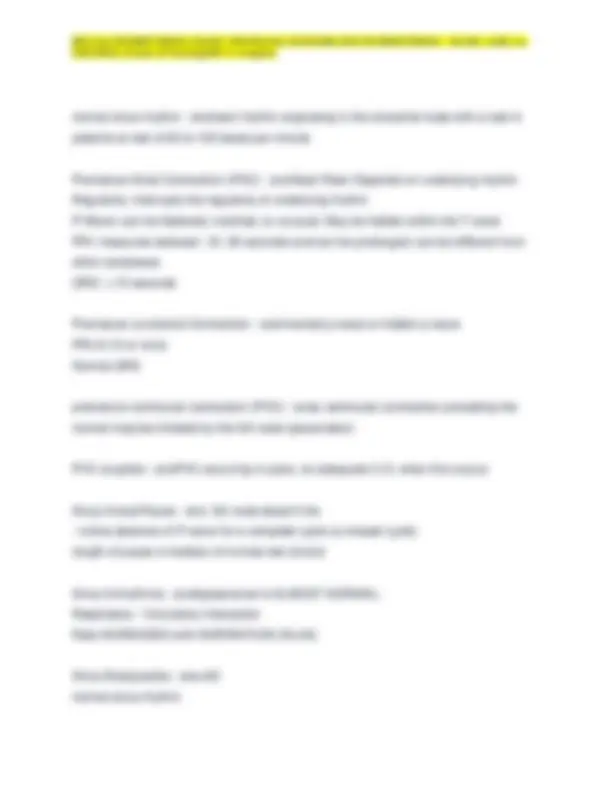
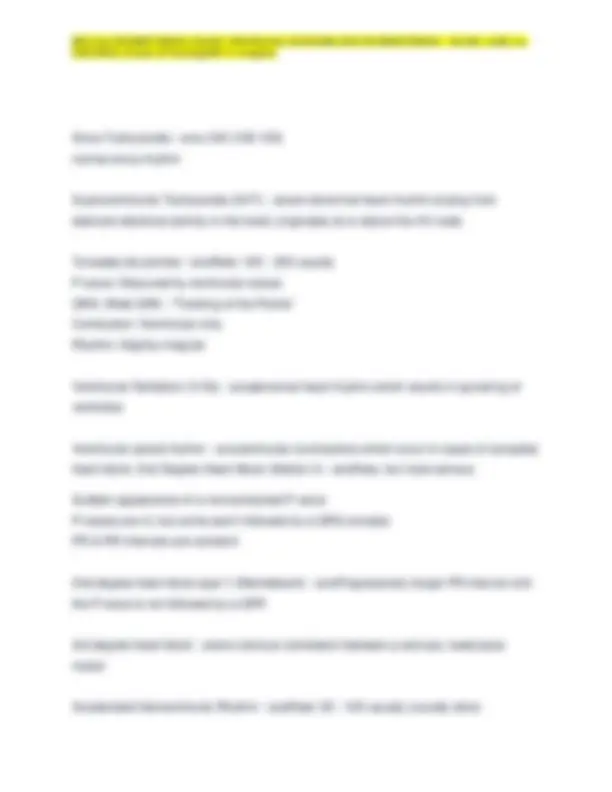
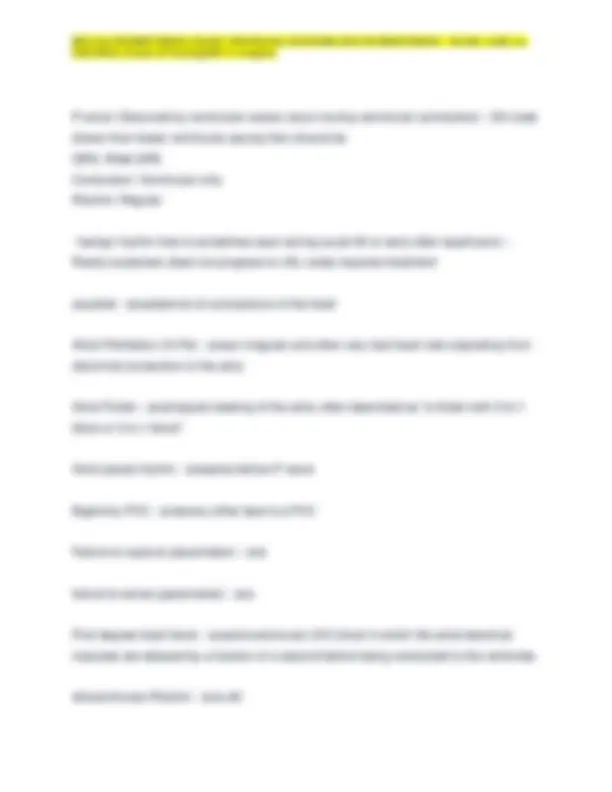
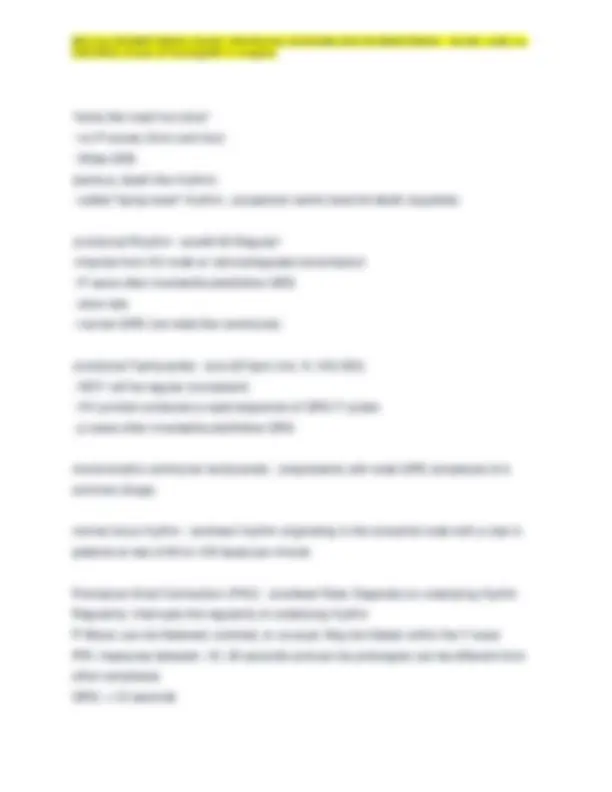
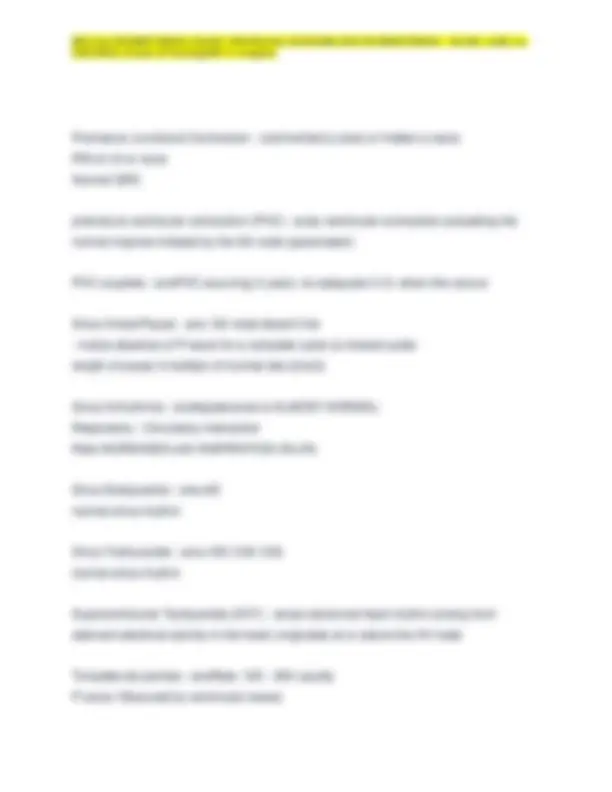
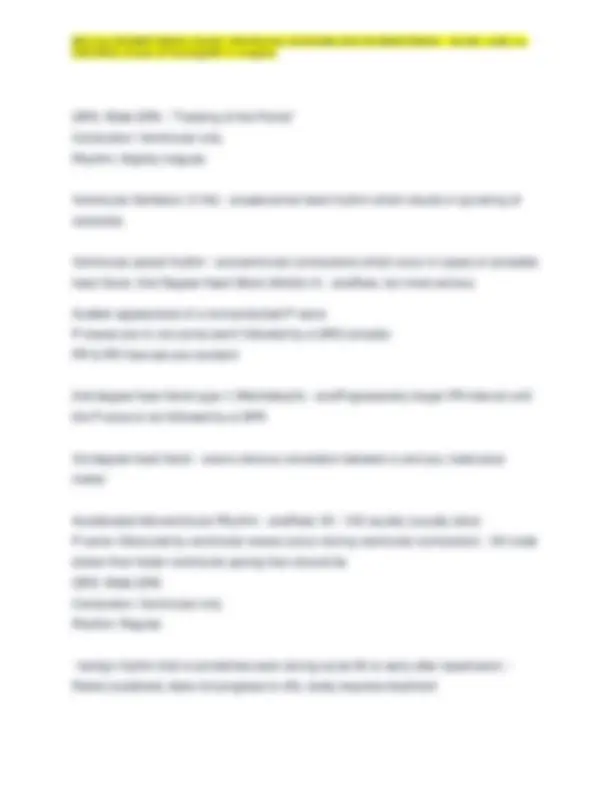
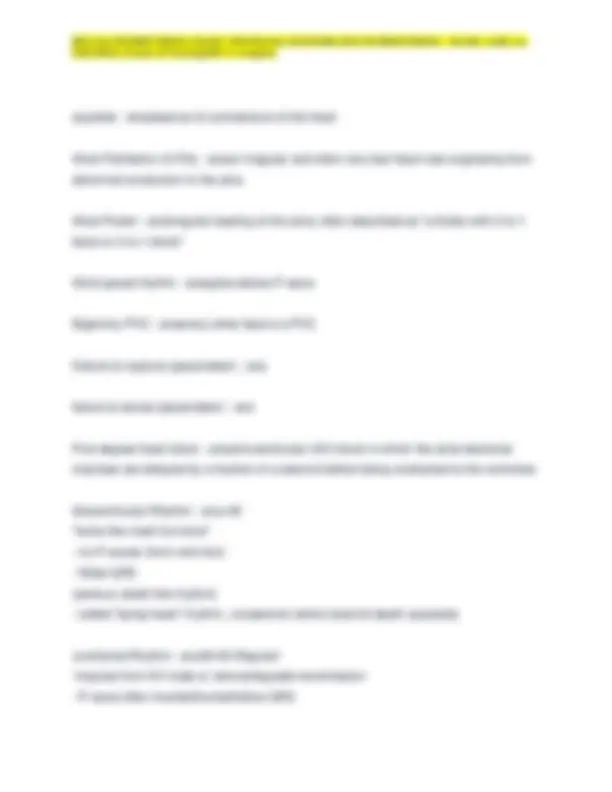
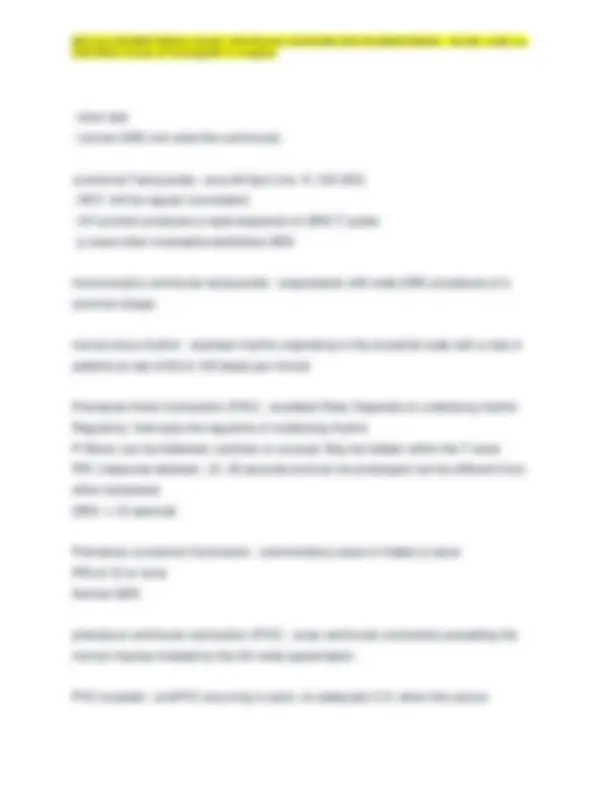

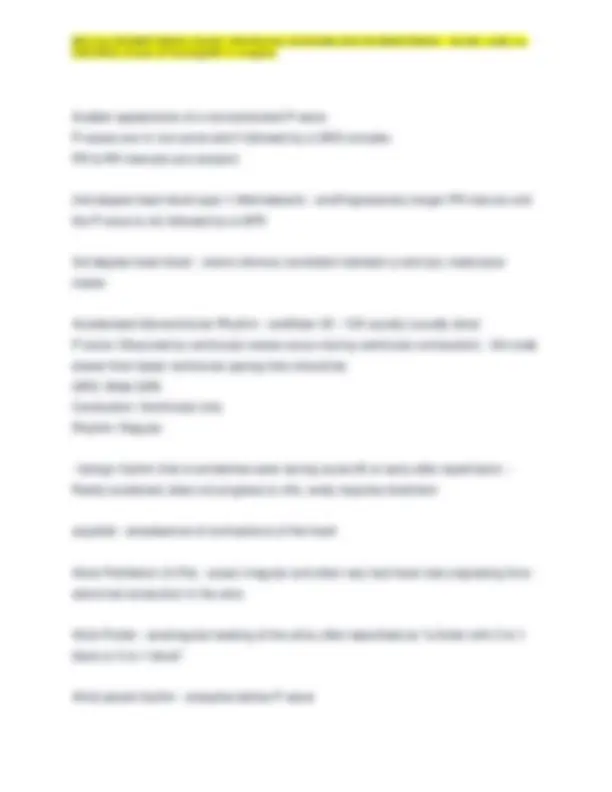
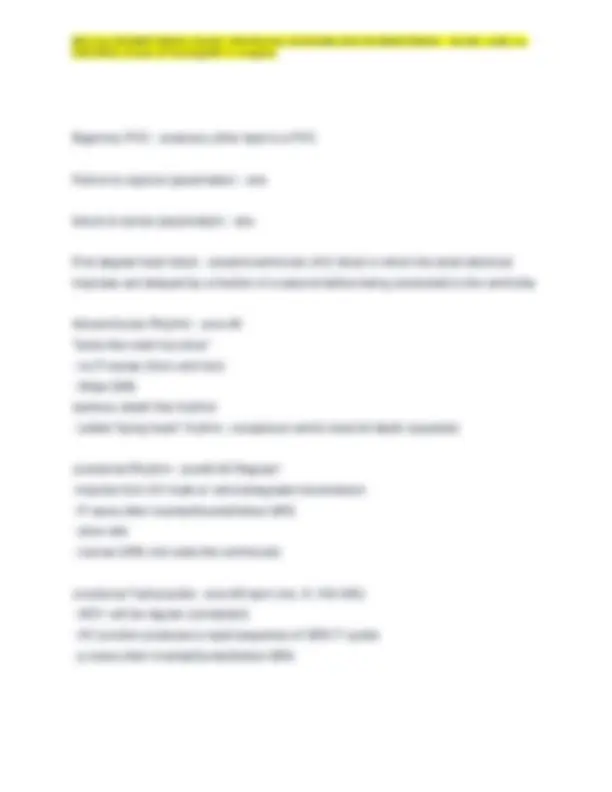
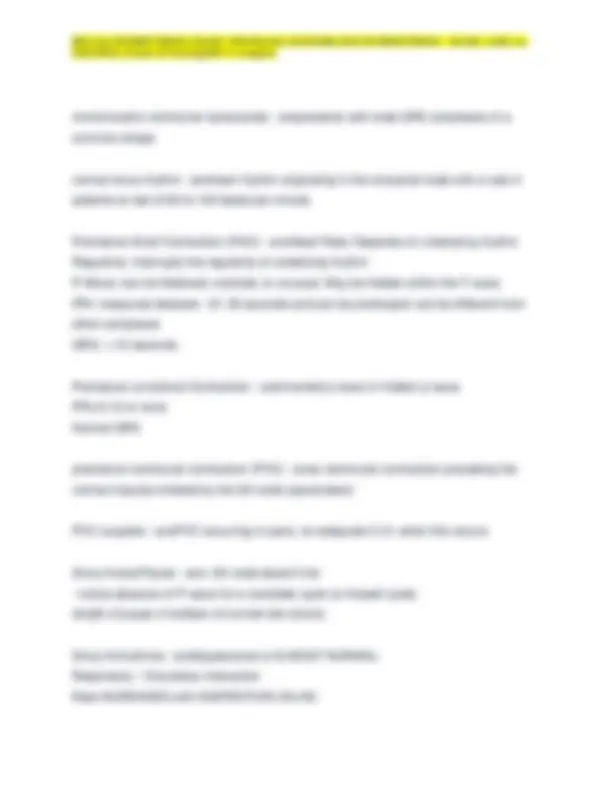
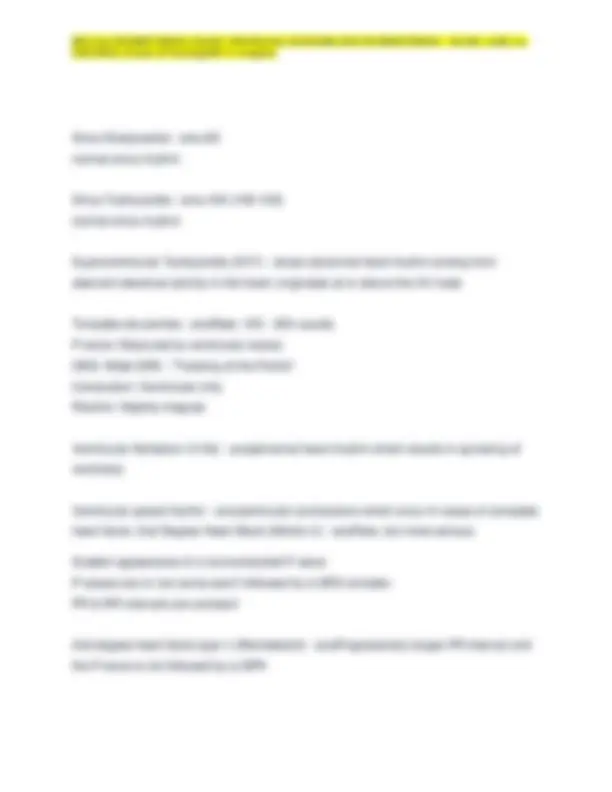
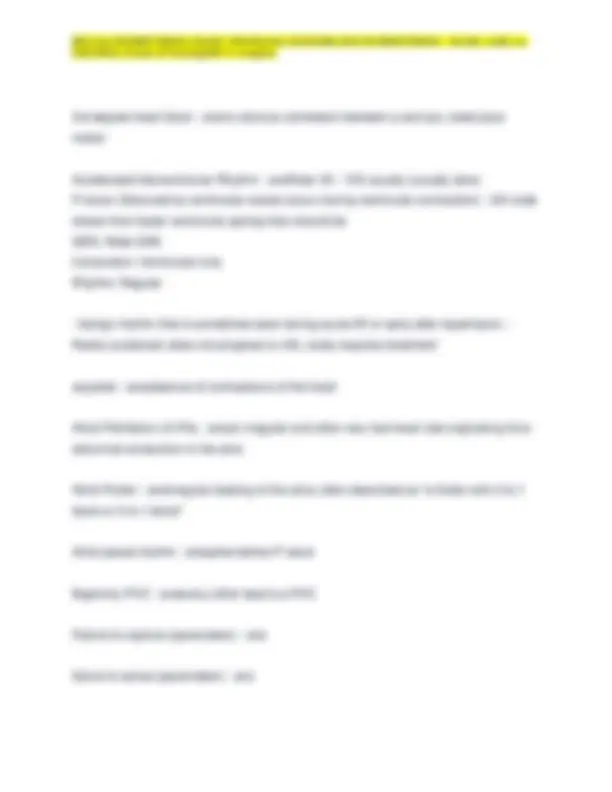
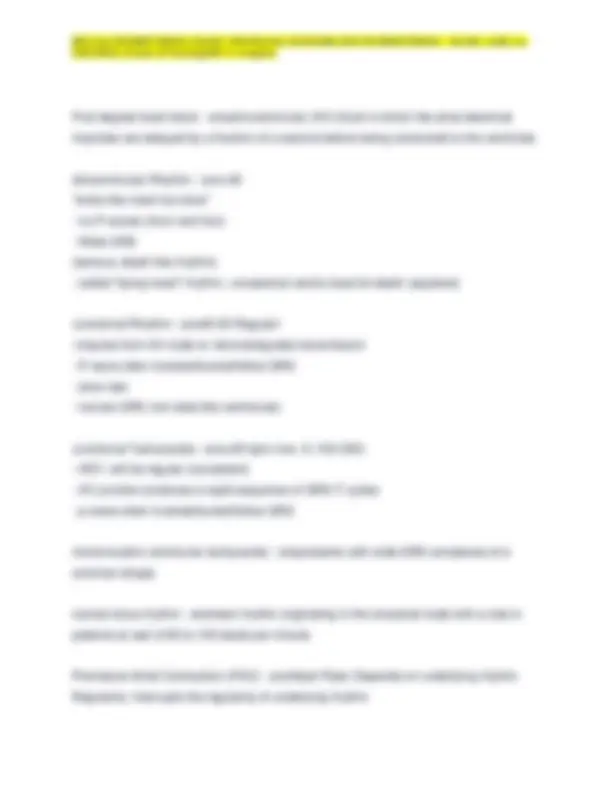
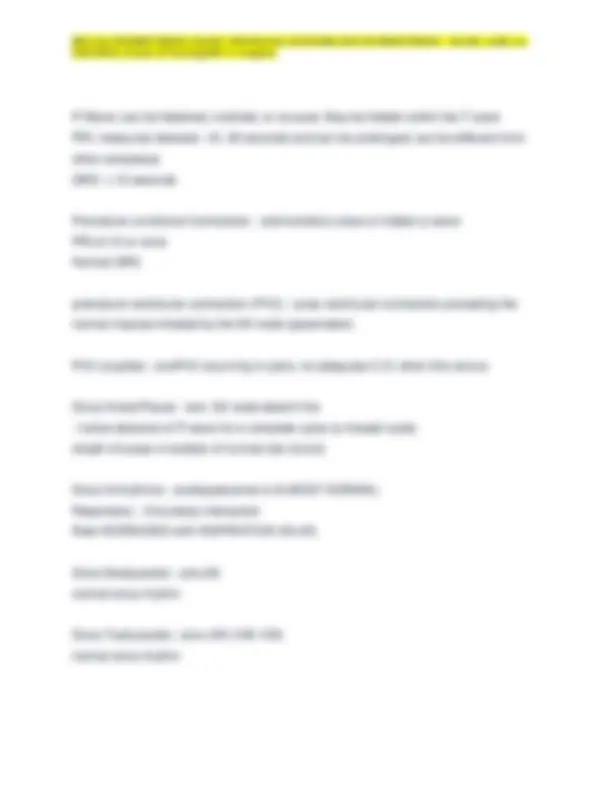
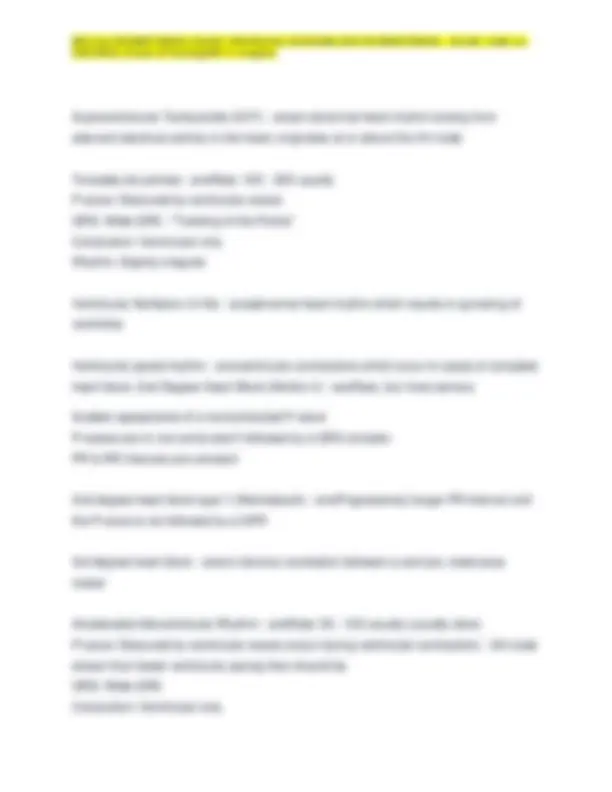
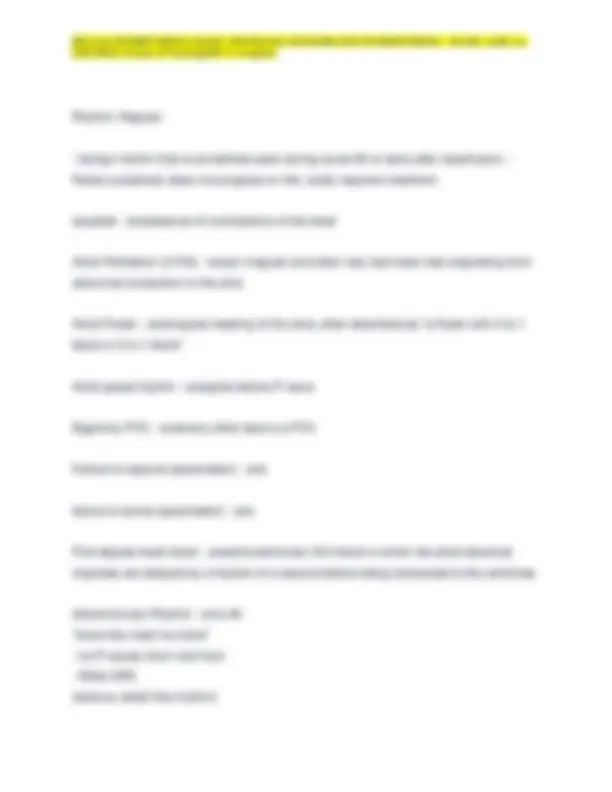
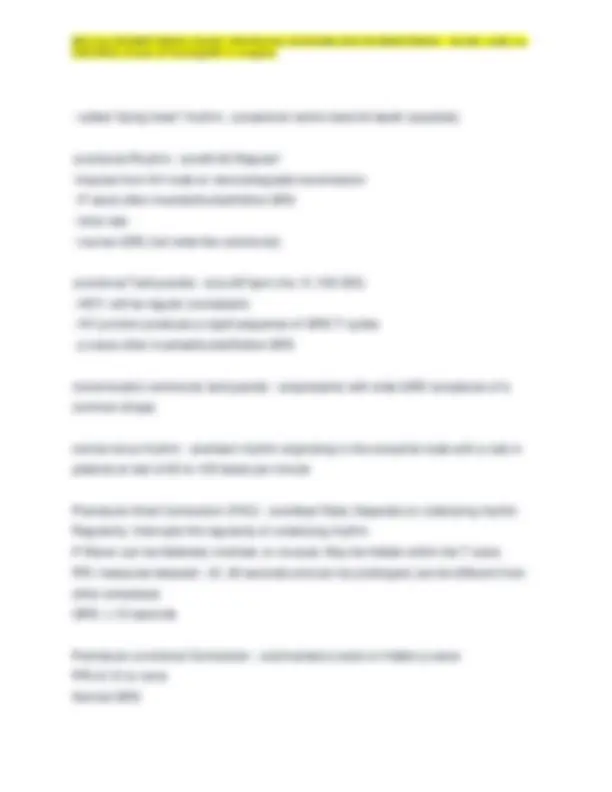
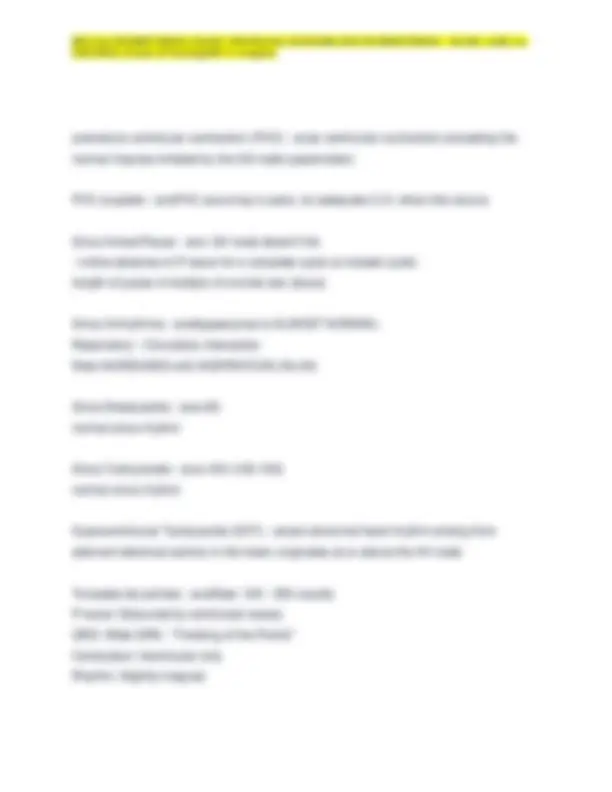
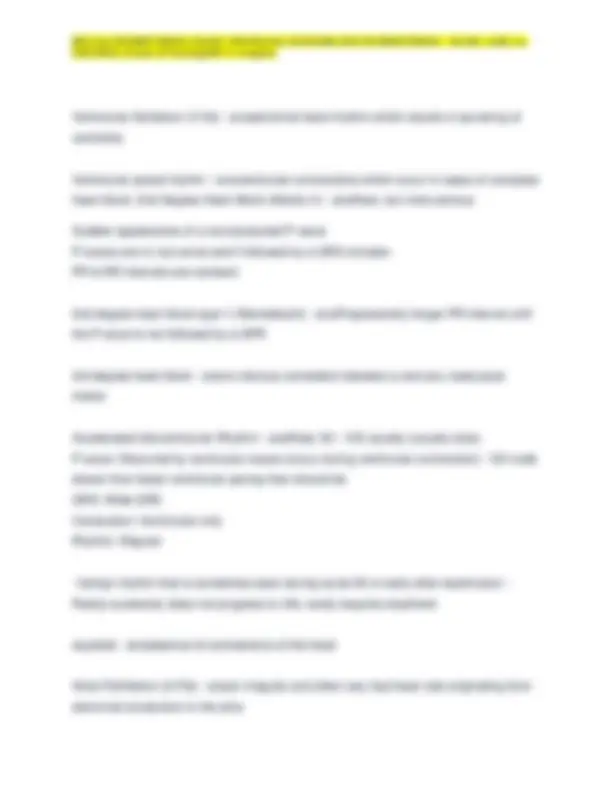
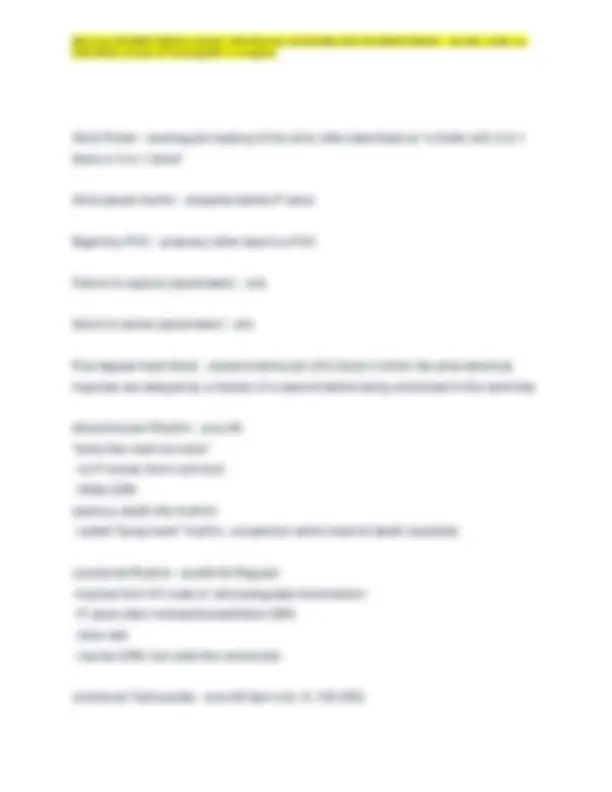

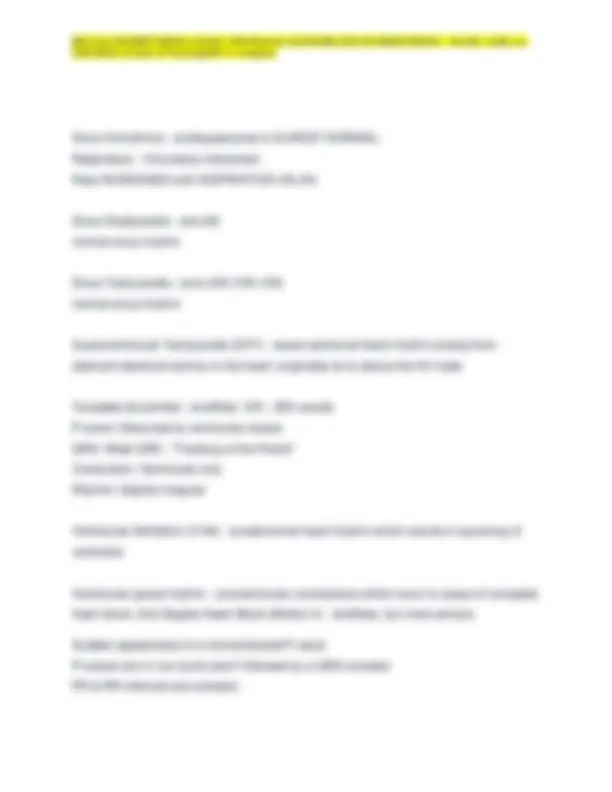
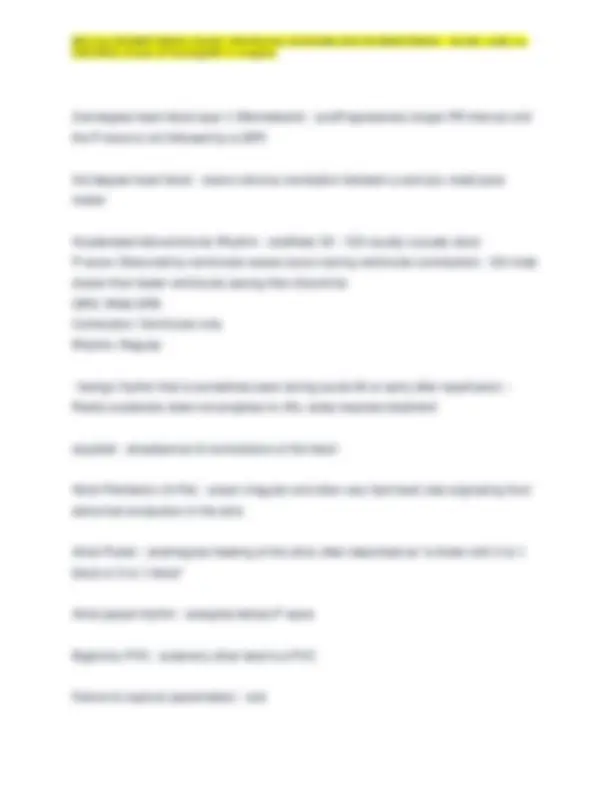
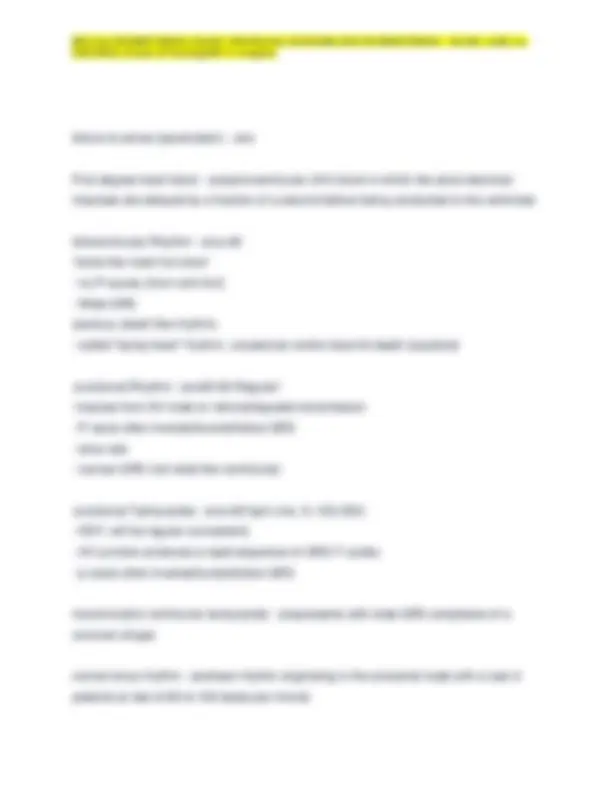
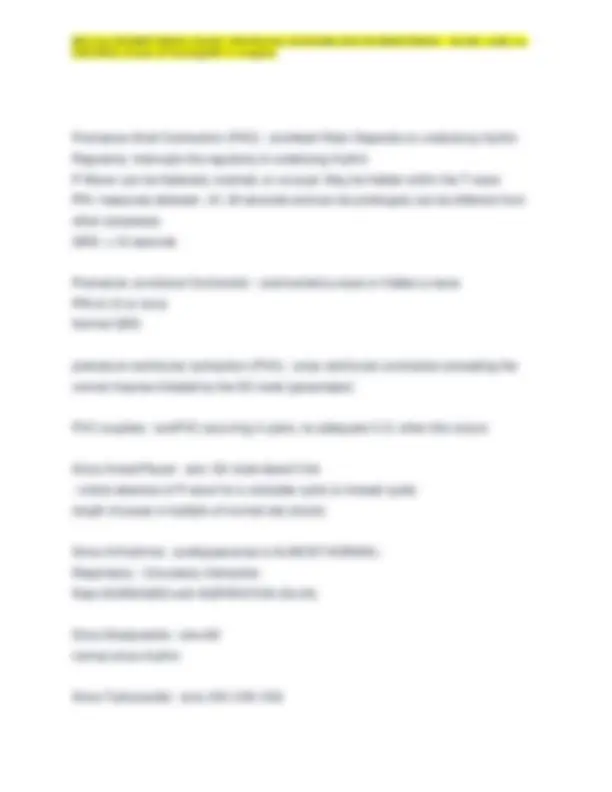
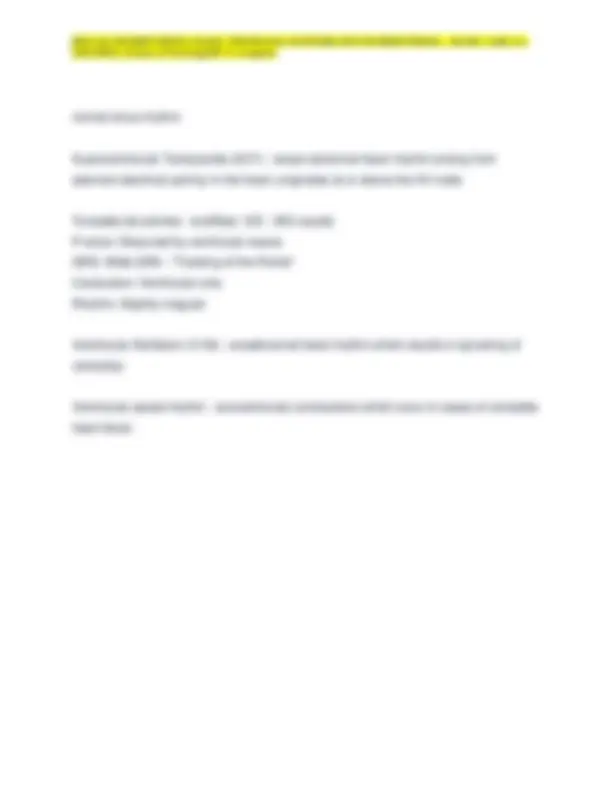


Study with the several resources on Docsity

Earn points by helping other students or get them with a premium plan


Prepare for your exams
Study with the several resources on Docsity

Earn points to download
Earn points by helping other students or get them with a premium plan
Community
Ask the community for help and clear up your study doubts
Discover the best universities in your country according to Docsity users
Free resources
Download our free guides on studying techniques, anxiety management strategies, and thesis advice from Docsity tutors
RELIAS DYSRHYTHMIA BASIC TESTBANK ANSWERS 2025 DYSRHYTHMIA – BASIC A&B (A+ GRADED), Exams of Nursing.pdf
Typology: Exams
1 / 93

This page cannot be seen from the preview
Don't miss anything!






















































































GRADED), Exams of Nursing|100 % complete 2nd Degree Heart Block (Mobitz II) - ansRare, but more serious Sudden appearance of a nonconducted P-wave P-waves are nl, but some aren't followed by a QRS complex PR & RR intervals are constant 2nd degree heart block type 1 (Wenkebach) - ansProgressively longer PR interval until the P wave is not followed by a QPR 3rd degree heart block - ansno obvious correlation between p and qrs, need pace maker Accelerated Idioventricular Rhythm - ansRate: 50 - 100 usually (usually slow) P wave: Obscured by ventricular waves (occur during ventricular contraction) - SA node slower than faster ventricular pacing than should be QRS: Wide QRS Conduction: Ventricular only Rhythm: Regular
GRADED), Exams of Nursing|100 % complete Atrial paced rhythm - ansspike before P wave Bigeminy PVC - ansevery other beat is a PVC Failure to capture (pacemaker) - ans failure to sense (pacemaker) - ans First degree heart block - ansatrioventricular (AV) block in which the atrial electrical impulses are delayed by a fraction of a second before being conducted to the ventricles Idioventricular Rhythm - ans< looks like vtach but slow
GRADED), Exams of Nursing|100 % complete Sinus Bradycardia - ans< normal sinus rhythm Sinus Tachycardia - ans>100 (100-150) normal sinus rhythm Supraventricular Tachycardia (SVT) - ansan abnormal heart rhythm arising from aberrant electrical activity in the heart; originates at or above the AV node Torsades de pointes - ansRate: 120 - 200 usually P wave: Obscured by ventricular waves QRS: Wide QRS - "Twisting of the Points" Conduction: Ventricular only Rhythm: Slightly irregular Ventricular fibrillation (V-fib) - ansabnormal heart rhythm which results in quivering of ventricles Ventricular paced rhythm - ansventricular contractions which occur in cases of complete heart block. 2nd Degree Heart Block (Mobitz II) - ansRare, but more serious Sudden appearance of a nonconducted P-wave P-waves are nl, but some aren't followed by a QRS complex PR & RR intervals are constant 2nd degree heart block type 1 (Wenkebach) - ansProgressively longer PR interval until the P wave is not followed by a QPR
GRADED), Exams of Nursing|100 % complete 3rd degree heart block - ansno obvious correlation between p and qrs, need pace maker Accelerated Idioventricular Rhythm - ansRate: 50 - 100 usually (usually slow) P wave: Obscured by ventricular waves (occur during ventricular contraction) - SA node slower than faster ventricular pacing than should be QRS: Wide QRS Conduction: Ventricular only Rhythm: Regular
GRADED), Exams of Nursing|100 % complete P-Wave: can be flattened, notched, or unusual. May be hidden within the T wave PRI: measures between .12-.20 seconds and can be prolonged; can be different from other complexes QRS: <.12 seconds Premature Junctional Contraction - ansInverted p wave or hidden p wave PRI<0.12 or none Normal QRS premature ventricular contraction (PVC) - ansa ventricular contraction preceding the normal impulse initiated by the SA node (pacemaker) PVC couplets - ansPVC occurring in pairs, no adequate C.O. when this occurs Sinus Arrest/Pause - ans- SA node doesn't fire
GRADED), Exams of Nursing|100 % complete Supraventricular Tachycardia (SVT) - ansan abnormal heart rhythm arising from aberrant electrical activity in the heart; originates at or above the AV node Torsades de pointes - ansRate: 120 - 200 usually P wave: Obscured by ventricular waves QRS: Wide QRS - "Twisting of the Points" Conduction: Ventricular only Rhythm: Slightly irregular Ventricular fibrillation (V-fib) - ansabnormal heart rhythm which results in quivering of ventricles Ventricular paced rhythm - ansventricular contractions which occur in cases of complete heart block. 2nd Degree Heart Block (Mobitz II) - ansRare, but more serious Sudden appearance of a nonconducted P-wave P-waves are nl, but some aren't followed by a QRS complex PR & RR intervals are constant 2nd degree heart block type 1 (Wenkebach) - ansProgressively longer PR interval until the P wave is not followed by a QPR 3rd degree heart block - ansno obvious correlation between p and qrs, need pace maker Accelerated Idioventricular Rhythm - ansRate: 50 - 100 usually (usually slow) P wave: Obscured by ventricular waves (occur during ventricular contraction) - SA node slower than faster ventricular pacing than should be QRS: Wide QRS Conduction: Ventricular only
GRADED), Exams of Nursing|100 % complete
GRADED), Exams of Nursing|100 % complete premature ventricular contraction (PVC) - ansa ventricular contraction preceding the normal impulse initiated by the SA node (pacemaker) PVC couplets - ansPVC occurring in pairs, no adequate C.O. when this occurs Sinus Arrest/Pause - ans- SA node doesn't fire
GRADED), Exams of Nursing|100 % complete Atrial Flutter - ansirregular beating of the atria; often described as "a-flutter with 2 to 1 block or 3 to 1 block" Atrial paced rhythm - ansspike before P wave Bigeminy PVC - ansevery other beat is a PVC Failure to capture (pacemaker) - ans failure to sense (pacemaker) - ans First degree heart block - ansatrioventricular (AV) block in which the atrial electrical impulses are delayed by a fraction of a second before being conducted to the ventricles Idioventricular Rhythm - ans< looks like vtach but slow
GRADED), Exams of Nursing|100 % complete
GRADED), Exams of Nursing|100 % complete 2nd degree heart block type 1 (Wenkebach) - ansProgressively longer PR interval until the P wave is not followed by a QPR 3rd degree heart block - ansno obvious correlation between p and qrs, need pace maker Accelerated Idioventricular Rhythm - ansRate: 50 - 100 usually (usually slow) P wave: Obscured by ventricular waves (occur during ventricular contraction) - SA node slower than faster ventricular pacing than should be QRS: Wide QRS Conduction: Ventricular only Rhythm: Regular
GRADED), Exams of Nursing|100 % complete failure to sense (pacemaker) - ans First degree heart block - ansatrioventricular (AV) block in which the atrial electrical impulses are delayed by a fraction of a second before being conducted to the ventricles Idioventricular Rhythm - ans< looks like vtach but slow
GRADED), Exams of Nursing|100 % complete normal sinus rhythm Supraventricular Tachycardia (SVT) - ansan abnormal heart rhythm arising from aberrant electrical activity in the heart; originates at or above the AV node Torsades de pointes - ansRate: 120 - 200 usually P wave: Obscured by ventricular waves QRS: Wide QRS - "Twisting of the Points" Conduction: Ventricular only Rhythm: Slightly irregular Ventricular fibrillation (V-fib) - ansabnormal heart rhythm which results in quivering of ventricles Ventricular paced rhythm - ansventricular contractions which occur in cases of complete heart block. 2nd Degree Heart Block (Mobitz II) - ansRare, but more serious Sudden appearance of a nonconducted P-wave P-waves are nl, but some aren't followed by a QRS complex PR & RR intervals are constant 2nd degree heart block type 1 (Wenkebach) - ansProgressively longer PR interval until the P wave is not followed by a QPR 3rd degree heart block - ansno obvious correlation between p and qrs, need pace maker Accelerated Idioventricular Rhythm - ansRate: 50 - 100 usually (usually slow) P wave: Obscured by ventricular waves (occur during ventricular contraction) - SA node slower than faster ventricular pacing than should be
GRADED), Exams of Nursing|100 % complete QRS: Wide QRS Conduction: Ventricular only Rhythm: Regular